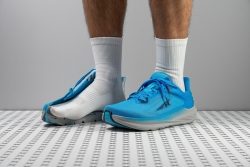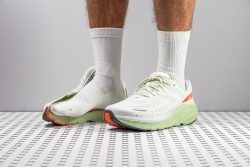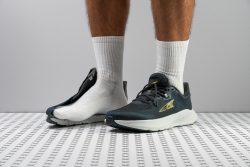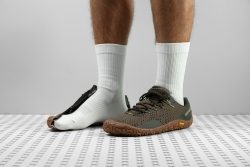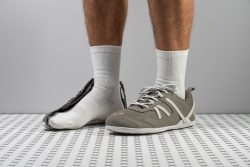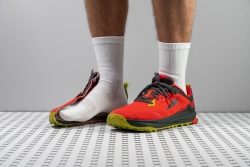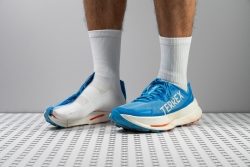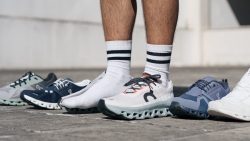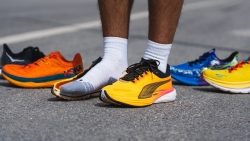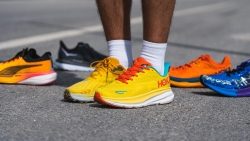7 Best Zero Drop Running Shoes in 2025
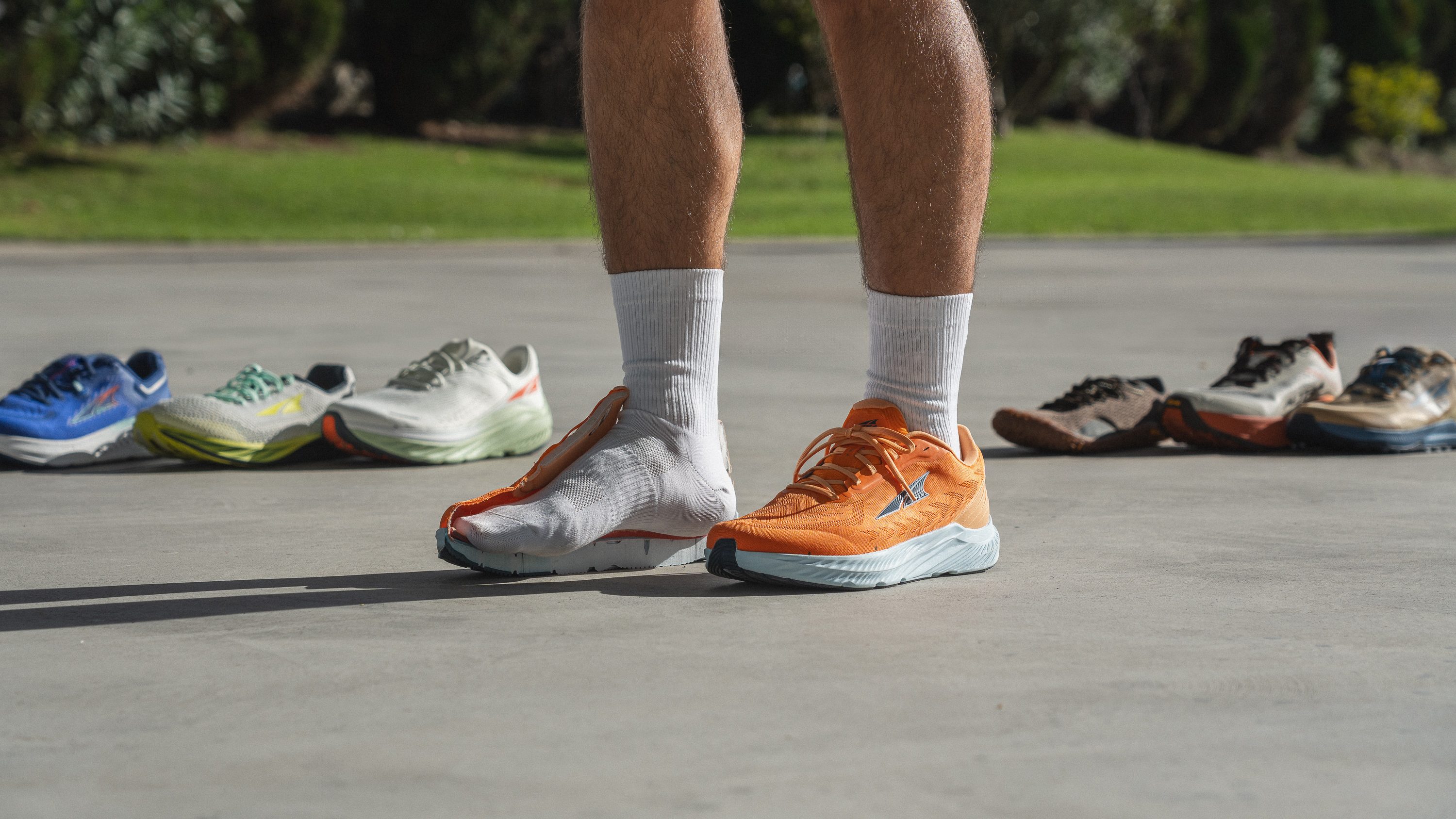
We buy shoes ourselves. We earn commissions when you buy through us, at no extra cost. Why trust us
Running in zero-drop running shoes is great BUT under a few conditions: you know why you’re doing it and what to expect. Learn more in this guide so you can make an informed decision. Reading Born to run is simply not enough (but is highly motivating, yes!).
Though many associate zero drop with minimalism, that’s not necessarily the case. There are some well-cushioned Altra shoes that prove the opposite. Here, you will find our best of the best zero-drop shoes. Our lab measurements of the stack heights are especially interesting because, as it turned out, many shoes that were branded as zero-drop, turned out to be low-drop or even mid-drop!
If you’re not sure about which heel-to-toe drop you need and the effects it might have on your body and running, read our in-depth guide on the heel-to-toe drop.
How we test zero drop running shoes
We are a group of running fanatics and we do in-depth research. We even started testing the shoes in our lab to put every shoe through the wringer and pick out the best in various categories. Here is the process:
- We buy all zero-drop running shoes with our own money. No brand out there tells us what to write or publish.
- We deliver feedback on shoes after we run, walk, and even do light workouts in them.
- We cut every shoe into pieces to measure shock absorption, stack height, drop, flexibility, tongue thickness, lug depth, and 20+ other parameters.
The best-performing zero-drop shoes make it here.
Best zero-drop running shoes overall
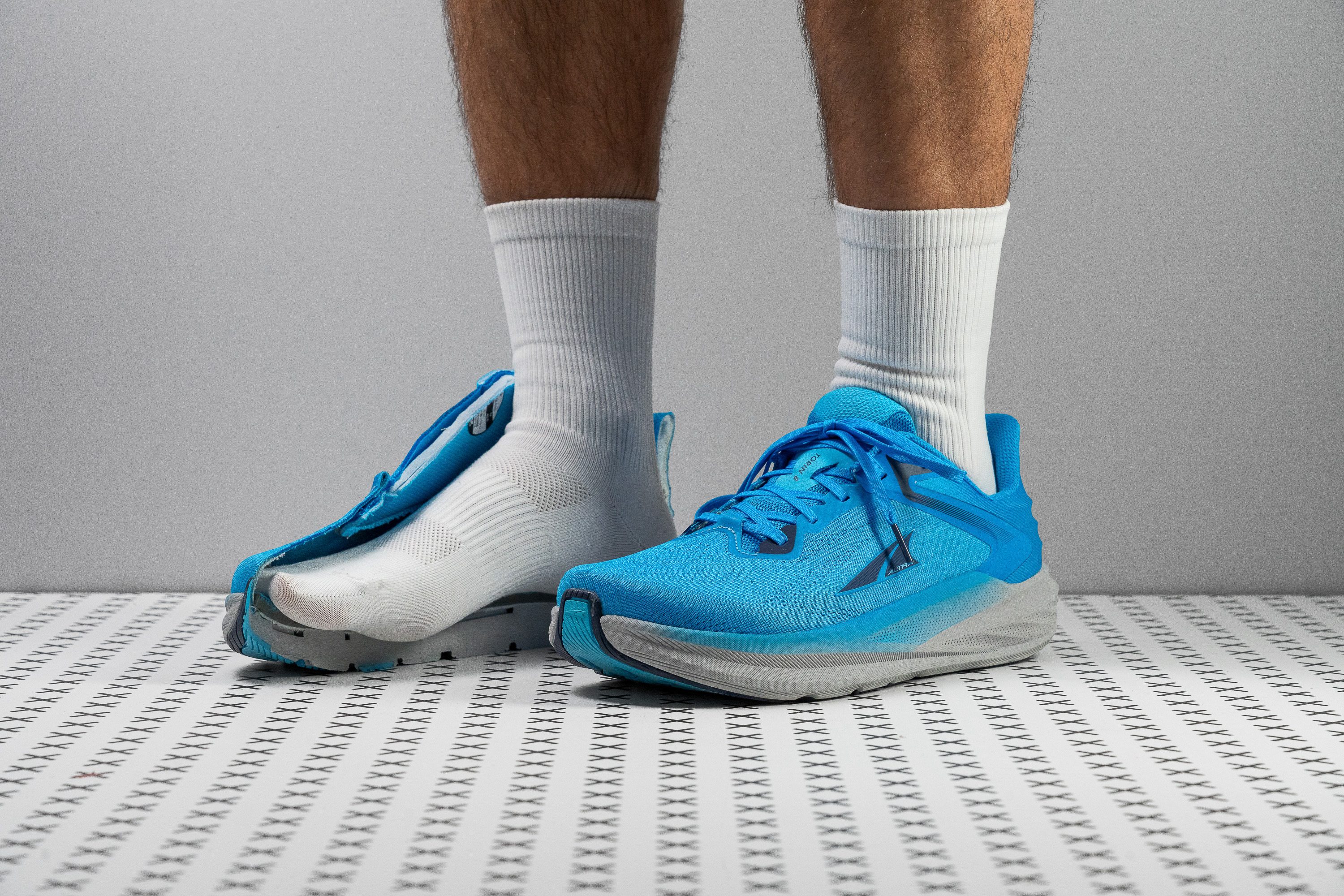

















































What makes it the best?
Altra Torin 8 is our top zero-drop running shoe because it offers the best barefoot experience through its ground feel, actual zero drop, and fluid midsole, which we all proved through lab tests. On top of that, its foot-shaped toebox adds comfort to our off-road adventures.
We identified two key factors behind the Torin 8’s barely-there feel: its flat profile and adaptive midsole. Measuring just -0.1 mm, the heel drop features a genuine zero-drop experience. The platform's fluid motion complements our movements seamlessly, which our bend test confirms is 6.7% more flexible than average.
Another key reason for our agility is its exceptional ground feel, delivered by its minimal 27.6/27.7 mm stack. Its high level of surface feedback allows us to adapt to various terrains, proven by its below-average shock absorption score of 110 SA in the heel.
We measured our gel mould replica to confirm the roominess we enjoyed in the toebox, and our calliper confirms a massive 83.6 mm measurement. Being 13.7% wider than average, it will feel spacious enough even for those with broad feet.
One complaint we have is that it lacks ventilation for warmer days. Those who think breathability is a must should skip this pair.
Pros
- True zero-drop midsole
- Foot-shaped, wide toebox
- Excellent durability
- Improved heel lockdown
- Plush step-in comfort
- Keeps the same price
- Can be used for walking
- Amazing for forefoot strikers
- Improved outsole
- Stable
Cons
- Weight gain compared to v7
- Not for rearfoot strikers
- Needs a better foam ASAP
- Non-gusseted tongue
Best zero-drop running shoes for long distance
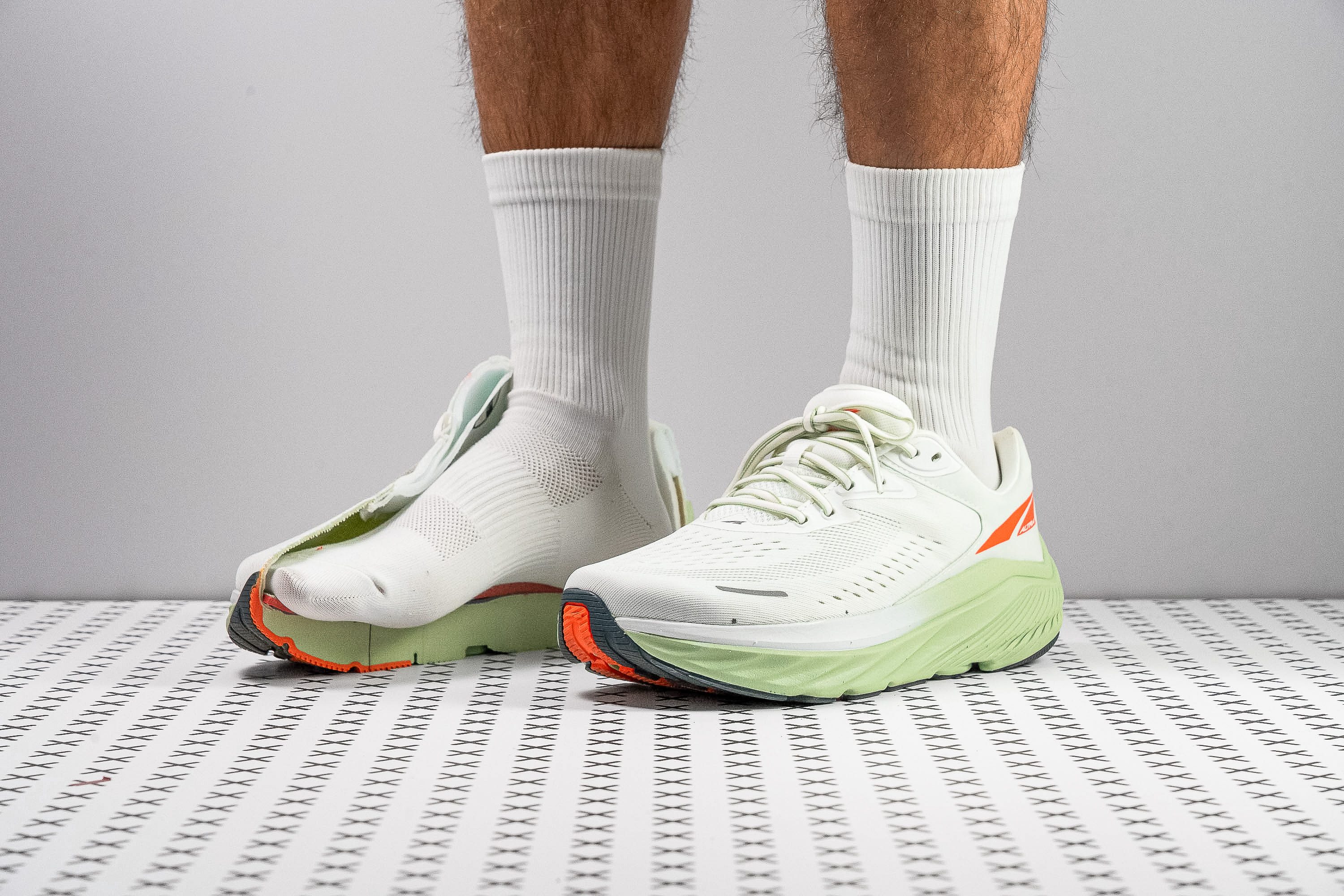



















































What makes it the best?
Among zero-drop running shoes we tested on foot and in the lab, Altra VIA Olympus 2 stands out as the best for long distance with its cushioned midsole offering a dynamic ride and its durable outsole surviving hundreds of miles. Not only that, it’s designed with intention, mirroring our natural foot shape for a more comfortable experience.
Made with EGO MAX foam, VO2 delivers a generously cushioned and responsive ride that feels more effortless in endurance runs. Our calliper reveals a tall 34.8 mm heel, and a staggering 35.0 mm forefoot, one of the tallest we’ve encountered in this area. This leads to a non-existent -0.2 mm drop, maintaining Altra’s zero-drop branding. With its plush foam, 32.2% softer than average, it infuses each stride with bounce and comfort.
The toebox boasts Altra’s FootShape design, mirroring the natural foot silhouette for unrestricted comfort. With a roomy 104.4 mm toebox tapering to 91.1 mm at the big toe, it accommodates foot swelling during long runs.
Even the outsole has the FootPod technology, with cuts that align with our foot anatomy. Though it measures softer than average, it shows 33.3% less wear in our Dremel test than average, proving it’s built to last.
However, VO2 offers limited ventilation, which may cause blisters and hotspots when running in hot weather. We recommend looking elsewhere if breathability is a priority.
Pros
- Incredibly roomy toebox
- Authentic zero-drop design
- Extremely cushy and soft midsole
- Superb all-around durability
- Cosy upper
- Remarkably stable
- Ideal for long runs
Cons
- Limited ventilation
- Tongue not gusseted
- Still a bit heavy
Best stability zero-drop running shoes
















































What makes it the best?
While zero-drop running shoes naturally keep us more steady, the Altra Provision 8 dominates stability in this category, and it does so in the most subtle way. Provision 8 is flexible in all angles, making it comfortable for daily wear. Lab results verify its support stems from its wide base and GuideRails technology.
The GuideRails consist of tall sidewalls that prevent foot collapse and overpronation. It’s amazing how exceptionally well-planted we feel, even if the shoe received a more flexible than average 3/5 torsional rigidity score in our assessment. Measuring the base, we noted the forefoot is wide at 117.9 mm, which also enhances our surefootedness.
When it comes to longitudinal flexibility, Provision 8 emerges 19.2% more pliable than average, boosting its versatility for other activities.
The platform has a low profile that naturally enhances stability, with precise measurements of 26.0/25.8 mm. The resulting heel drop is a virtually flat 0.2 mm, offering an authentic barefoot experience.
With its minimal cushion, we expected the shoe to be light, which is why its 9.6 oz (273g) reading on the scale disappointed us. Those who prioritise peak agility and weightlessness should try another shoe.
Pros
- Authentic zero-drop design
- Exceptional stability at all paces
- Anatomically shaped toebox
- Competitive pricing
- Durable, flexible outsole
- Versatile for daily wear
- Great for daily mileage
Cons
- Heel padding durability
- Weight increase from v7
- Needs more energy return
Best zero-drop minimalist running shoes
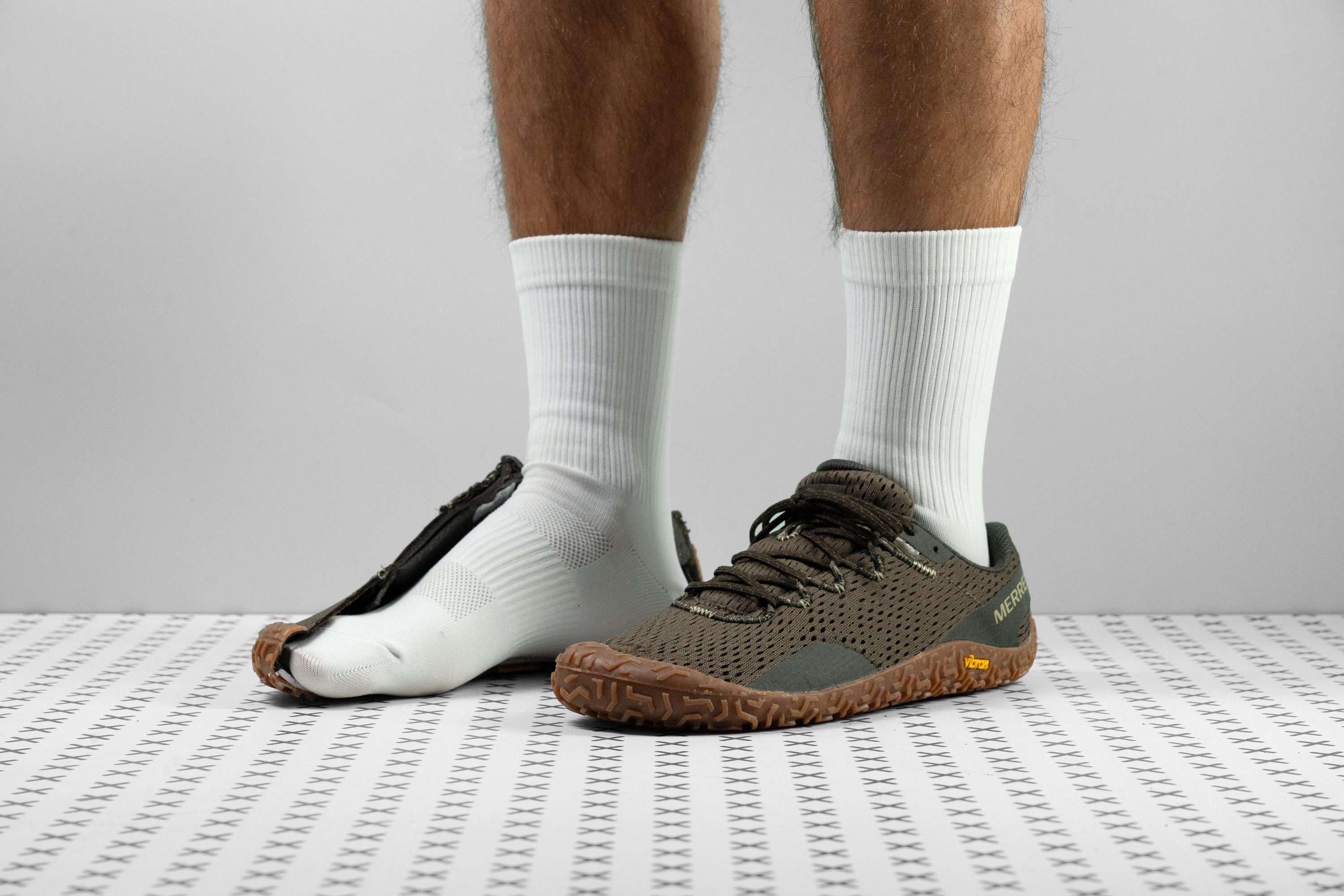




































What makes it the best?
Among zero-drop running shoes, Merrell Vapour Glove 6 stands out by perfectly encapsulating the essence of minimalism. Rigorous evaluations on foot and in the lab reveal it delivers an authentic experience through its flexible midsole, grounded feel, and dependable traction. Despite its exceptional performance, this shoe remains steadfastly minimalist, exemplified by its accessible price tag of only £90.
The shoe disappears on foot as we start running and our scales reveal why: it’s an almost weightless 5.6 oz (159g), boldly shaving off 40.2% from the average trail shoe’s build. Further enhancing its featherweight feel is the manoeuvrable midsole, which emerged a staggering 92.2% more flexible than average. It basically feels like there’s no resistance to bending at all.
The light and loose build is the result of VG6 stripping away its cushioning. At a low and levelled 7.6 mm stack, it makes us highly sensitive to ground feel, allowing us to quickly adapt to unpredictable terrains. This shoe truly delivers the zero-drop experience and our precise measurements align.
Underfoot is the reliable Vibram outsole with an aggressive pattern to enhance grip. Staying consistent in our assessments, Vibram delivers unmatched traction on mixed terrains we tested.
Unfortunately, those with narrow feet will find the shoe overly spacious. These types of runners who prefer a glove-like fit can explore elsewhere.
Pros
- Foot-shaped toebox
- Exceptional ground feel
- Fairly priced at $90
- Super agile
- Extremely flexible design
- Maintains grip, even on wet surfaces
- Sockless ready
- Perfect for road running or tackling easy trails
- Versatile enough for hiking, walking, or even gym workouts
- Versatile enough for hiking, walking, or even gym workouts
Cons
- Overly spacious for those with narrow feet
- Outsole shows wear quickly
- The cushioned insole detracts from a true barefoot experience
Best budget-friendly zero-drop running shoes
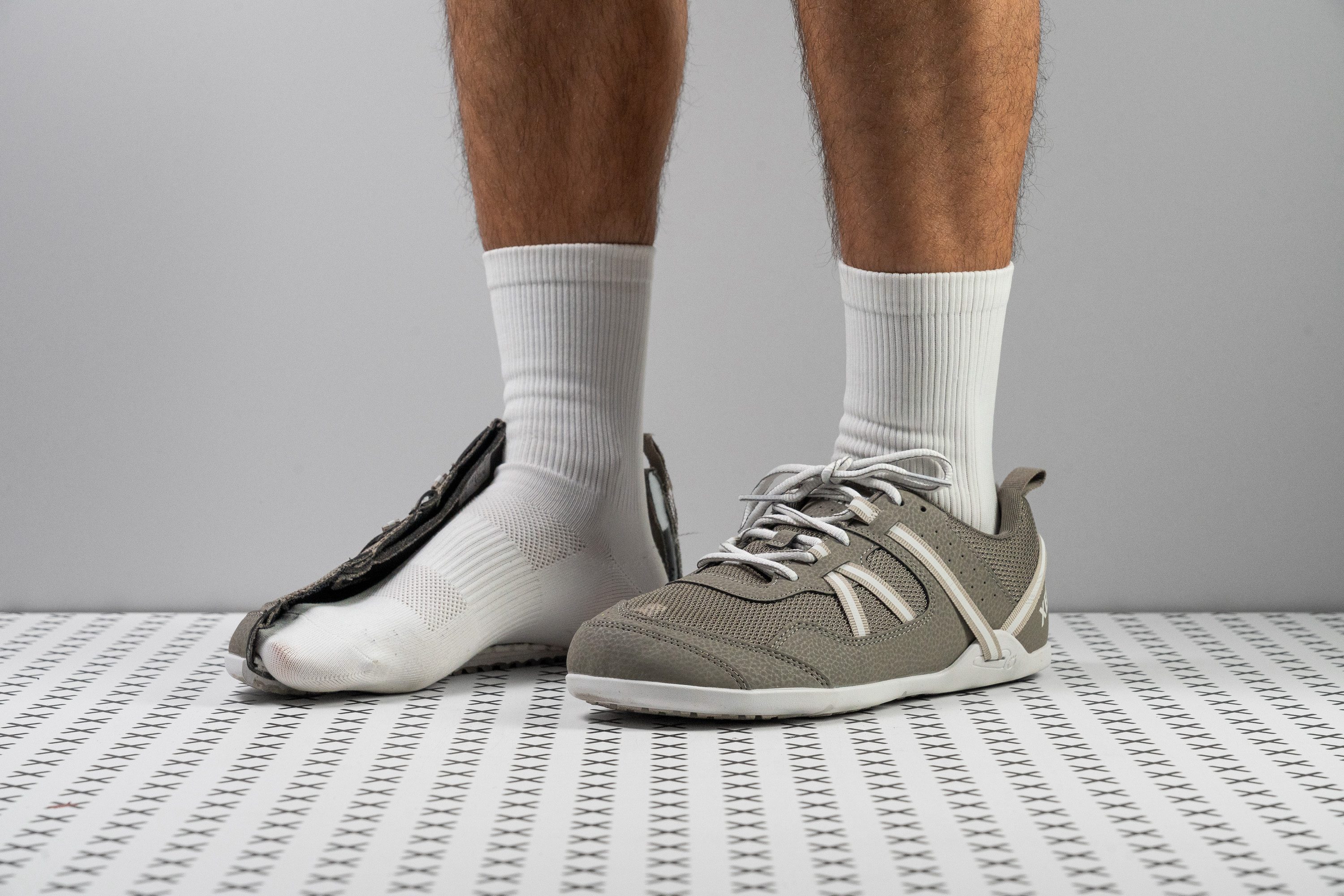











































What makes it the best?
Xero Shoes Prio embraces simplicity—in its stripped-down build, low resistance to movement, and accessible £90 price. Being 36.6% cheaper than the average zero-drop running shoe in our lab, it’s our best budget pick for this category.
The Prio’s minimal stack offers maximum ground feedback, as we only have 12.2/11.8 mm of material separating us from the ground. It features a minimal 0.4 mm drop that enhances the barefoot sensation and really engages our leg muscles.
Because it basically has no midsole, the Prio is flexible in all angles. It doesn’t need much stiffness in its structure since its low profile naturally enhances stability. In our torsional rigidity assessment, it earned the lowest 1/5 score as it twisted freely in our hands. Meanwhile, we recorded its longitudinal flexibility to be a whopping 73.3% above average. Prio offers no resistance whatsoever.
Contrary to expectations, its weight is not minimal at all and even exceeds the average running shoe with its 9.8 oz (279g) build. Those who find this too heavy for what it offers should try other shoes.
Pros
- Low price
- Super-flexible and comfortable
- Rugged toebox for daily wear
- Thick outsole with full-rubber coverage
- Snug but spacious fit
- Adjustable tension strap system
- Perforated insole
- Perforated insole
Cons
- Warm upper lacks airflow
- Heavier than it should be!
- Terrible grip
Best zero-drop trail running shoes
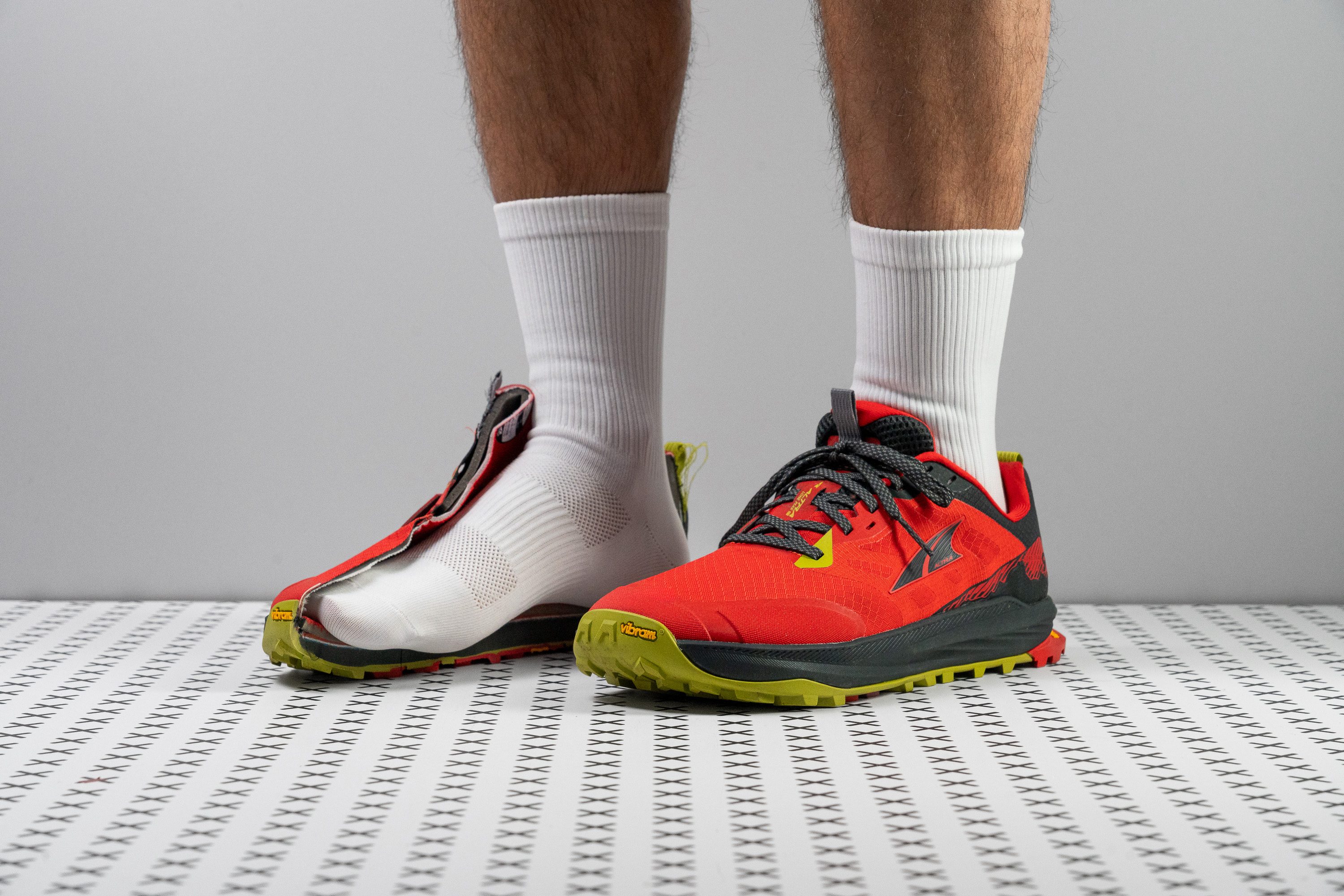





















































What makes it the best?
Among all the shoes we lab-tested and ran in, Altra Lone Peak 9 won us over with its grippy base, intuitive ride, and inherent stability. As our top zero-drop trail shoe, it tackles mixed terrains with ease and control.
Navigating through unpredictable grounds feels like a breeze as the LP9+ version features the stellar Vibram Megagrip outsole. True to its reputation, it clings well to wet and dry surfaces, with deep 3.8 mm arrow-shaped lugs serving as brakes during steep slopes.
LP9 maintains a below-average 23.3 mm cushion in both the heel and forefoot, which leads to a no-brainer zero drop. This low and levelled profile promotes a more natural running feel with well-planted feet and fewer ankle rolls. We have high ground sensitivity without losing that extra bounce underfoot. In our energy test, we recorded impressive scores of 57.9% in the heel and 57.6% in the forefoot, giving a nice spring in our runs.
The wide, squared toe box follows our natural foot shape to enhance comfort and stability upon landing. The big toe area only tapers by 13.4% vs. the 22.0% average. The gel mould is non-tapered, confirmed by our calliper, with a massive 85.3 mm big toe area.
A weak point we found is the stiffer build of the shoe, which loses the barefoot sensation that minimalists enjoy. Those who prefer a more natural ride should find flexible shoes.
Pros
- True zero-drop geometry
- Extra-roomy, foot-shaped toebox
- Vibram option finally available
- Improved forefoot stability
- Flat-profile, natural ride
- Secure lacing system
- Still a low-stack shoe!
- Standard and wide versions
- Good durability
Cons
- Feels really heavy for its size
- Stiffer than previous versions
- Lacks airflow
- Having two outsole versions adds confusion
Best zero-drop trail supershoes
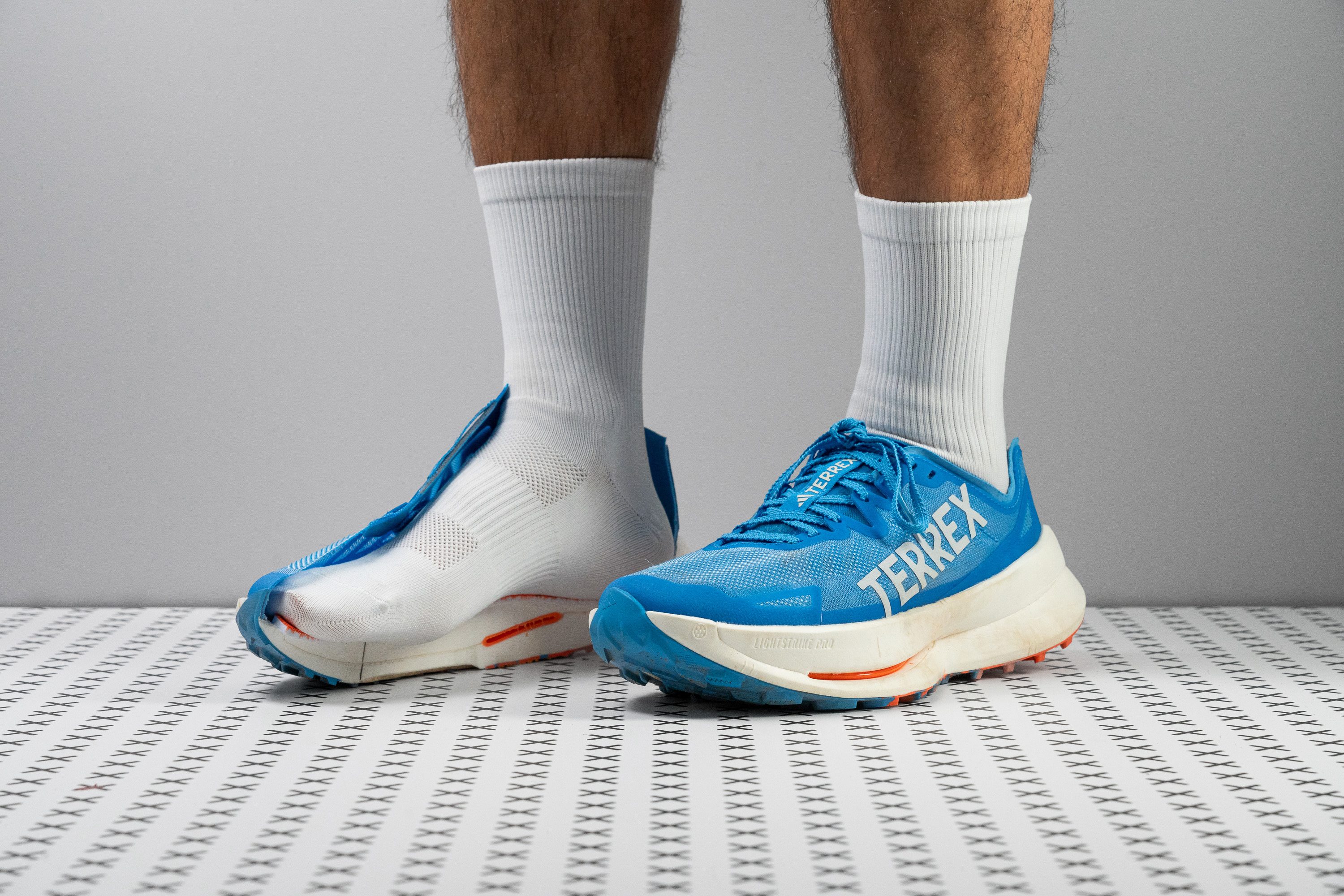





















































What makes it the best?
Just by its name, we already know the Adidas Terrex Agravic Speed Ultra has speed and long-distance comfort in its DNA. The streets and our lab further confirm its position as the best trail supershoe among zero-drop running shoes. With its light build and Lightstrike Pro midsole, it offers a cushioned and energetic experience.
Light at just 9.2 oz (259g), the shoe disappears as soon as we start running. Adding to its weightlessness is the highly responsive midsole, which returned impressive scores of 66.8% (heel) and 70.5% (forefoot) in our energy return test.
High stack and low drop is what this speedster's all about. The minimal 0.3 mm drop is barely noticeable, offering a true zero-drop experience. At 30.6/30.3 mm, it’s ready to take on multi-hour runs, especially since the midfoot reaches 38.0 mm because of the rocker. The forefoot also boasted a 127 SA score in our shock absorption test, meaning it reduces landing impact by 30.9% vs. average.
Surprisingly, the ride feels forgiving and bends easily with our feet. It only needs 15.3N to reach 30 degrees, much lower than other supershoes.
However, those seeking extra room for toe splaying should steer clear of this shoe, since we measured the toebox to be 5.6% narrower than average.
Pros
- Premium Continental rubber
- Explosive energy return
- Breathable race-ready upper
- Propulsive EnergyRods and rocker combo
- Perfect for midfoot strikers
- Explosive toe-off with extreme rocker
- Built to conquer ultra distances
- Excellent implementation of Lightstrike Pro
- Durable materials
- Excellent laces
Cons
- Unstable on technical terrain
- Heel collar design needs improvements
- Not a good pick for rearfoot strikers
- Not for wide feet
Caution! Read this before buying zero-drop running shoes
This section is written specifically for runners who are looking into zero-drop running shoes for the first time. This means you have never used zero-drop shoes and are considering them now.
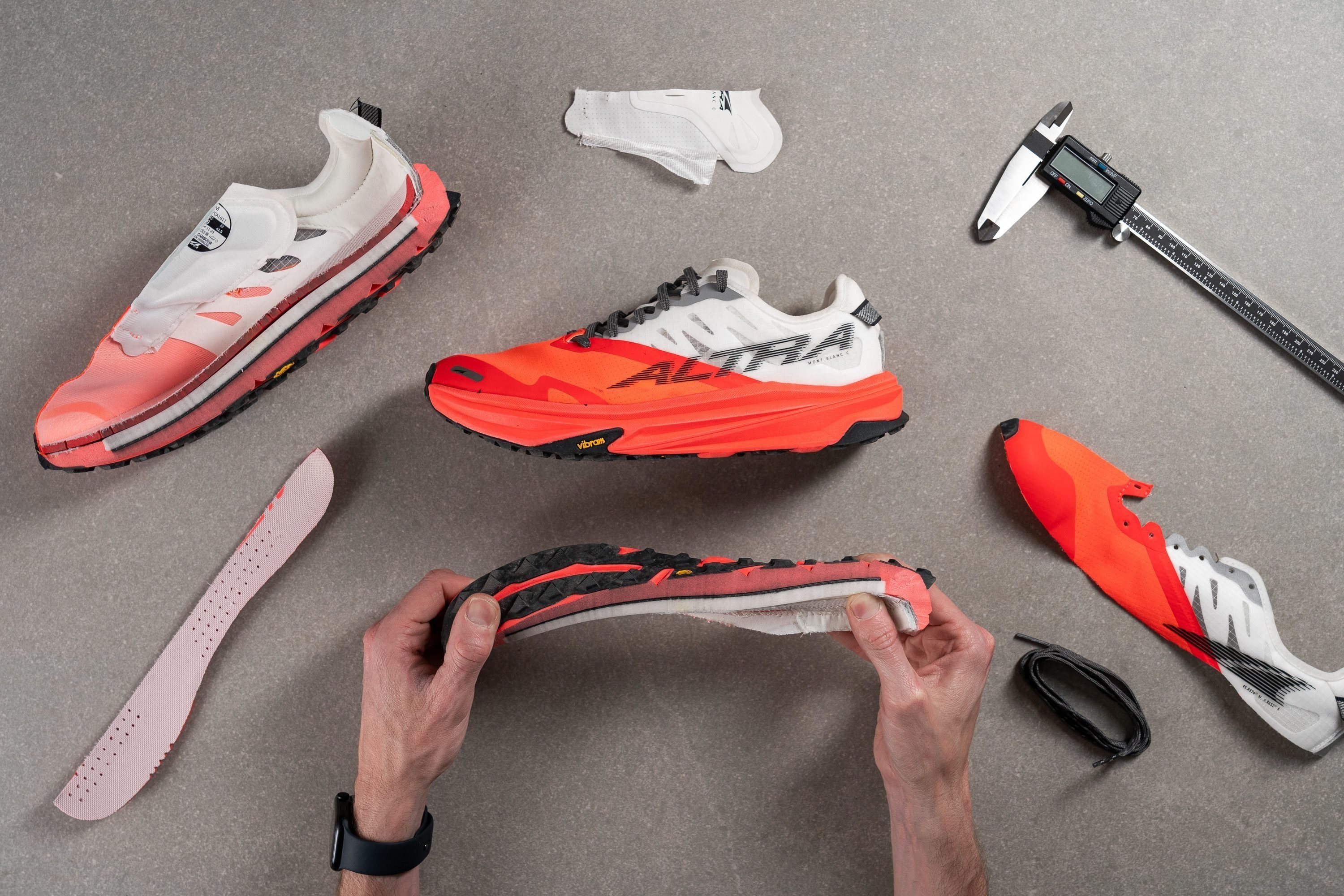
What you must know:
- It is never advisable to suddenly change from a high drop to a low drop, especially to the zero drop. Because of that, we recommend that you first look at the drop of your current running shoes or other footwear. If not zero drop or very low drop (up to 2-3 mm), the general recommendation is to transition to the zero-drop gradually.
- Zero-drop shoes can be minimalist or barefoot, but not necessarily. If this is your first time dealing with zero-drop shoes, consider trying the zero-drop shoes first and then going for the “extreme” of being barefoot or minimalist. This means you should look for some cushioning and not go for the very flat and low-to-the-ground shoes.
- Zero-drop shoes with minimal cushioning can be painful, especially if you’re a heel striker or if you haven’t transitioned to the zero-drop gradually. It is also said that the low-drop and zero-drop shoes promote forefoot strike more. Keep this in mind if you’re a heavy heel striker as these shoes might alter your stride and strike.
We have covered all of these challenges, pros and cons of different heel drops, and cited many studies, in our Ultimate guide on heel to toe drop. We highly recommend you read it before adding shoes of various heel drops to your rotation.
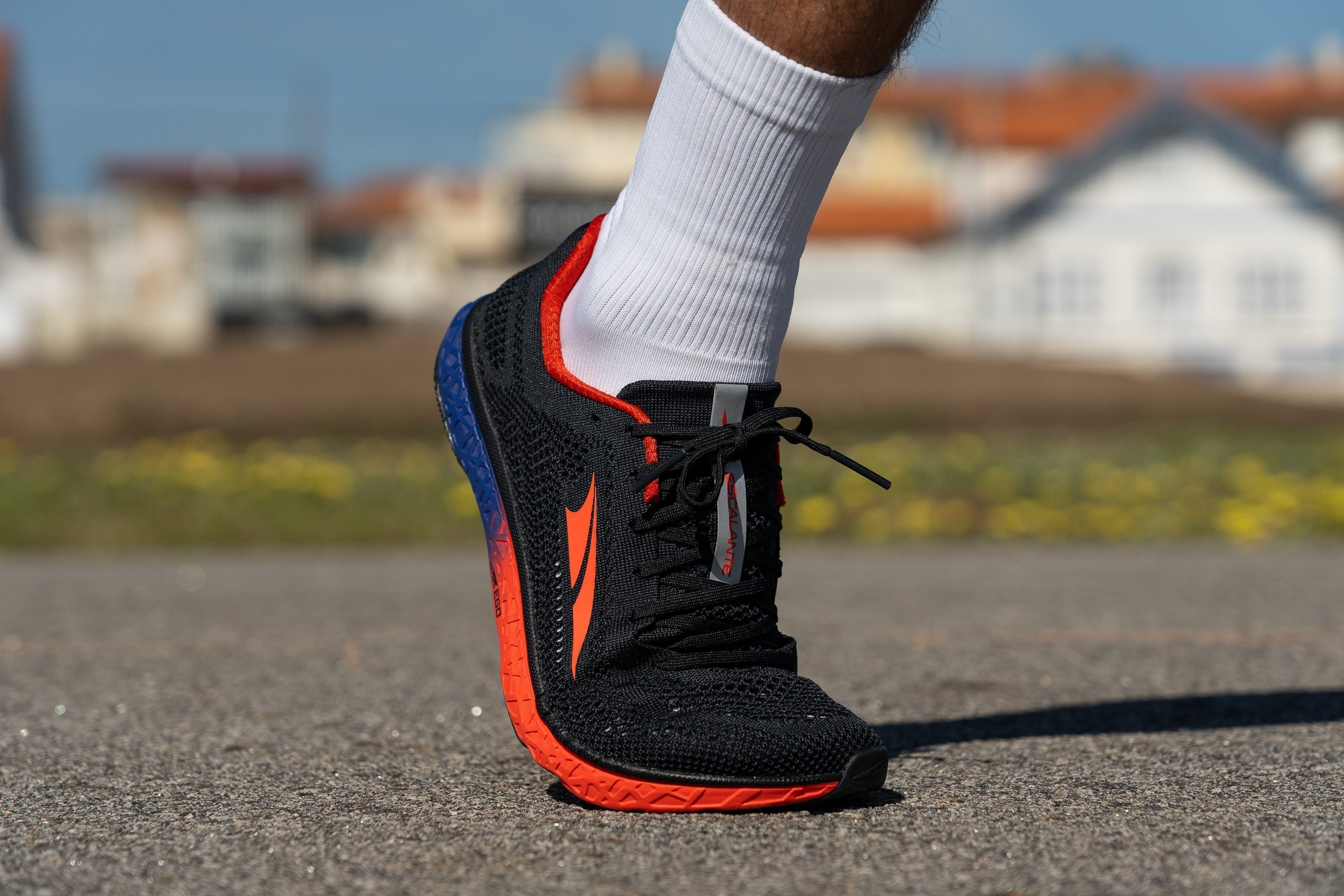
Know the difference: Zero drop vs. minimalist vs. barefoot
Minimalist running shoes have:
- Low heel drop
- Low stack heights
- High level of flexibility (both longitudinal and torsional)
- Light weight
- No stability features (they don’t help with stabilisation or gait correction).
Overall, minimalist running shoes provide minimal interference with the natural movement of the feet. Here, you can actually calculate how minimalist (in %) running shoes that you’re using are.
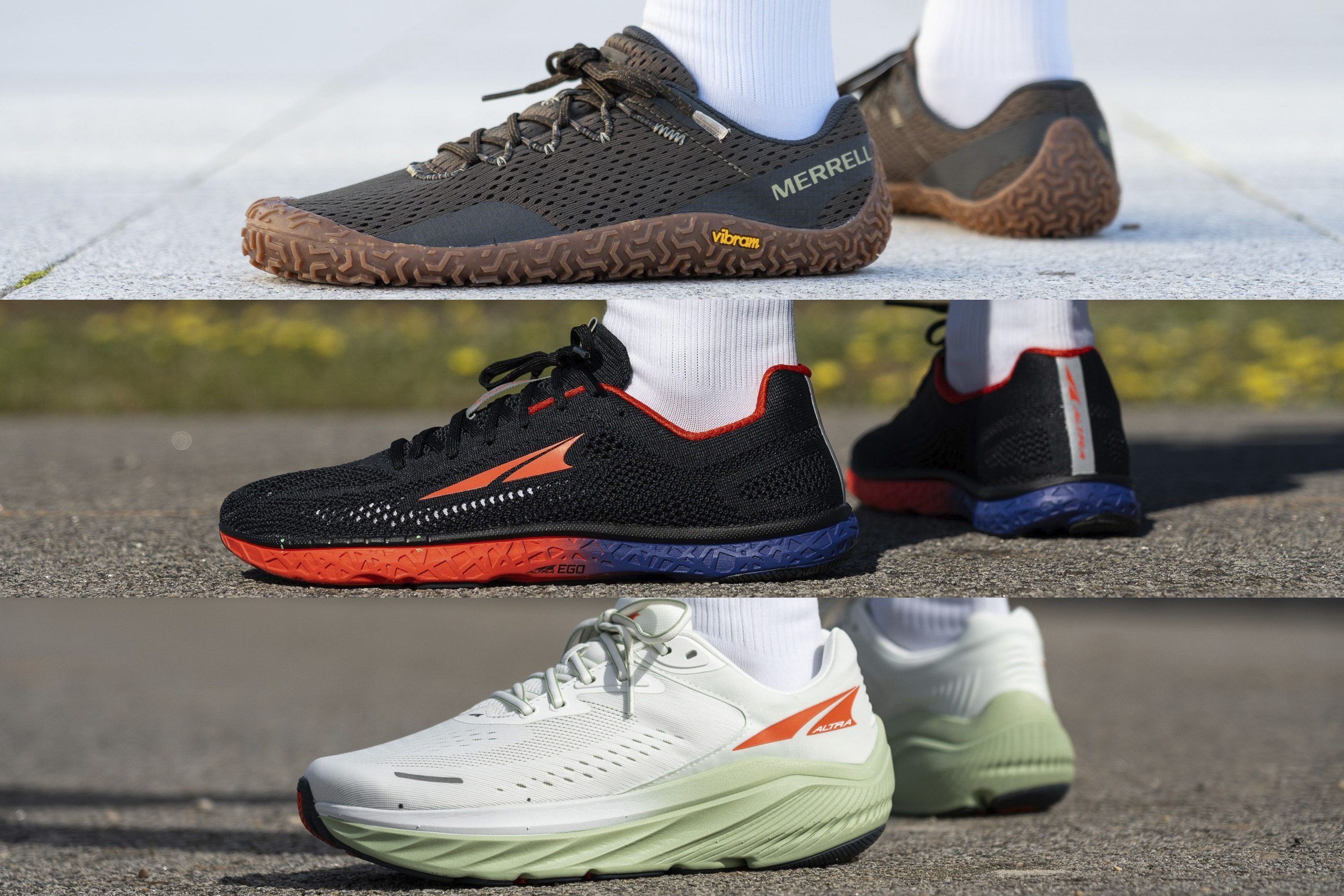
Barefoot running shoes are minimalist running shoes that resemble that barefoot feel, which means they have a heel drop of 0 mm, are very low to the ground, and are insanely flexible.
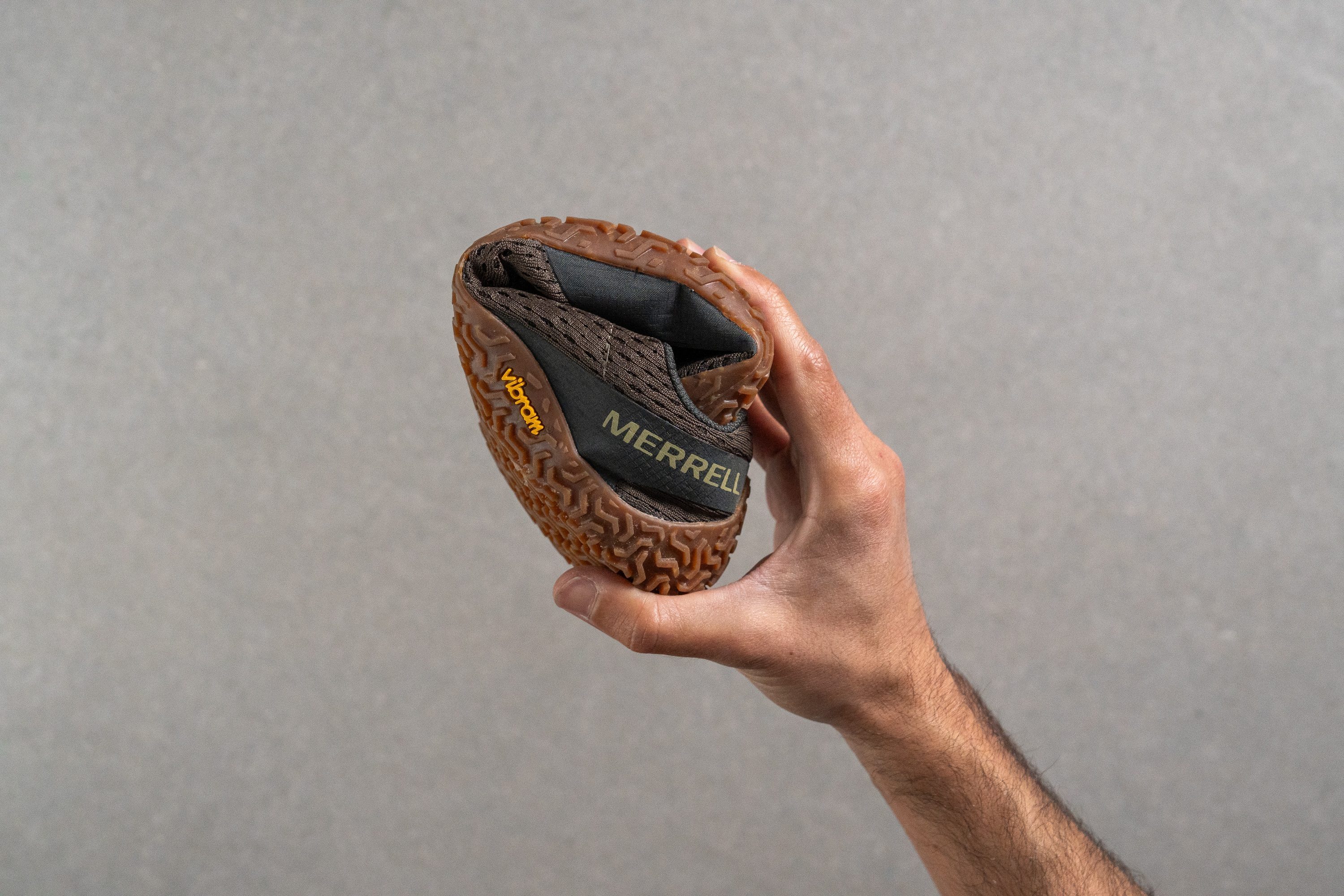
Zero-drop shoes don’t have to be minimalist or barefoot. They only have a heel drop of 0 mm.
Official heel drop is often WRONG
Brands often add specifications to their shoes, like weight, stack heights, and heel drop. In our lab, we measure them all as well. What we found out is that the advertised heel drop is often wrong. While this is not such a big issue when the difference is small, say 1-2 mm, it can be a big issue when the difference is huge.
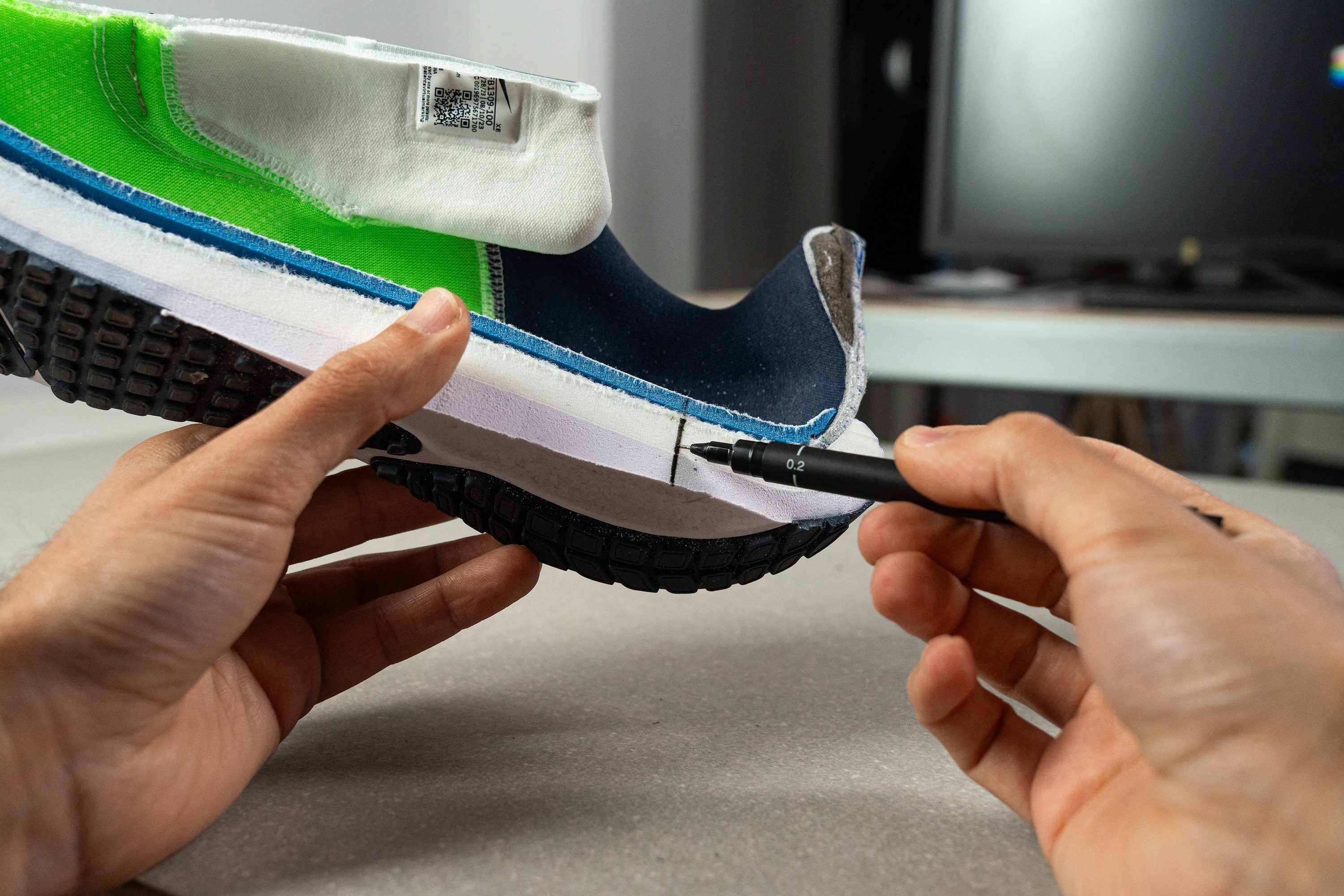
The trouble with the wrong heel drop is that you may buy a shoe with a low drop because you want to strengthen your feet, but you end up with a high-drop shoe that will actually make your hips work more. Or, you plan for a standard ~10mm drop because you’re a beginner but end up with a low-drop shoe that asks for a transition period. Best case scenario, these changes end up with some fatigue or a change in foot strike. Worst case scenario, you can get injured.
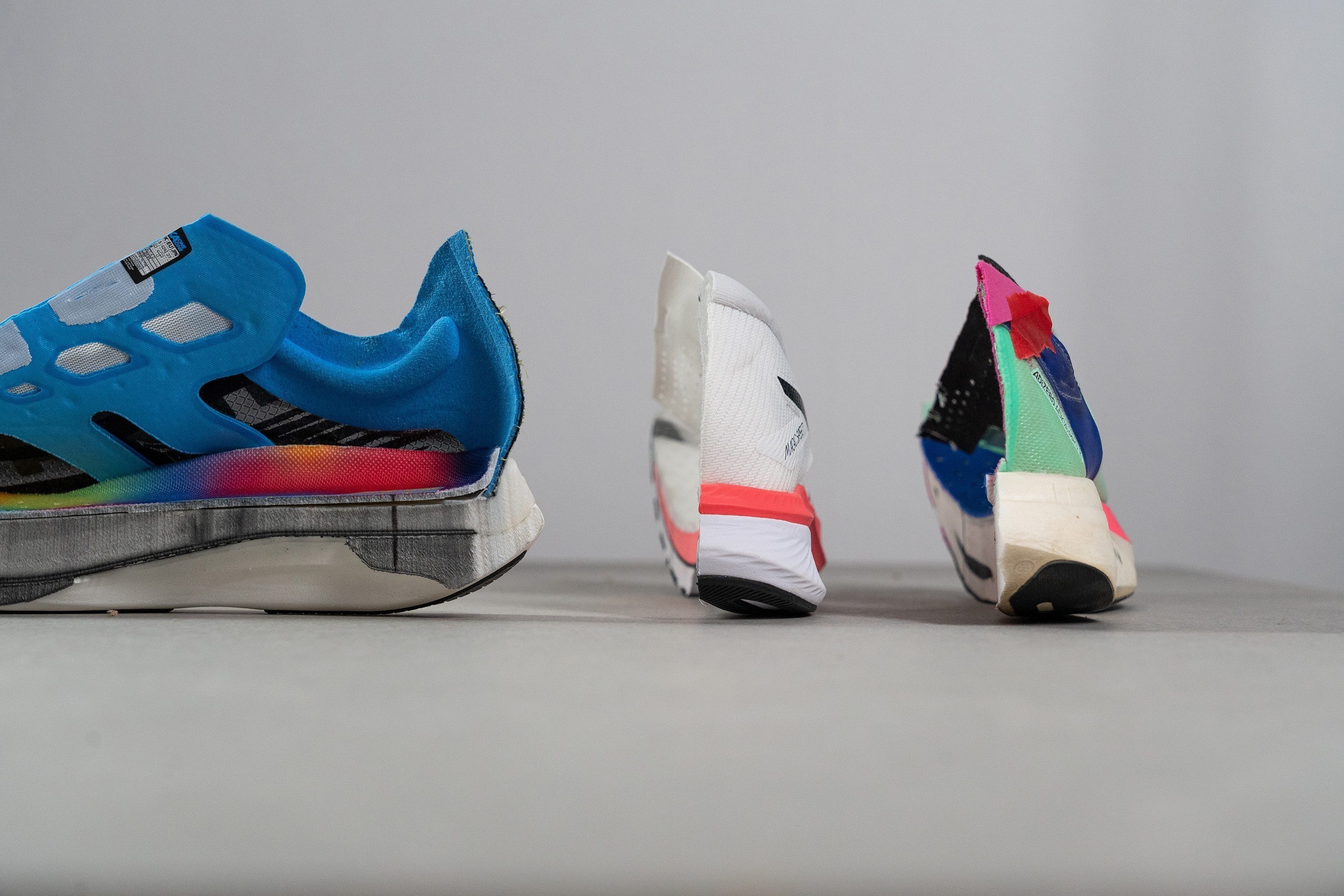
In the lab, we stick to the official guidelines of the World Athletics. We measure the forefoot stack height at 75% of the internal length of the shoe and the heel stack height at 12% of the internal length. These measurements are always taken at the centre of the shoe, not closer to the sides.
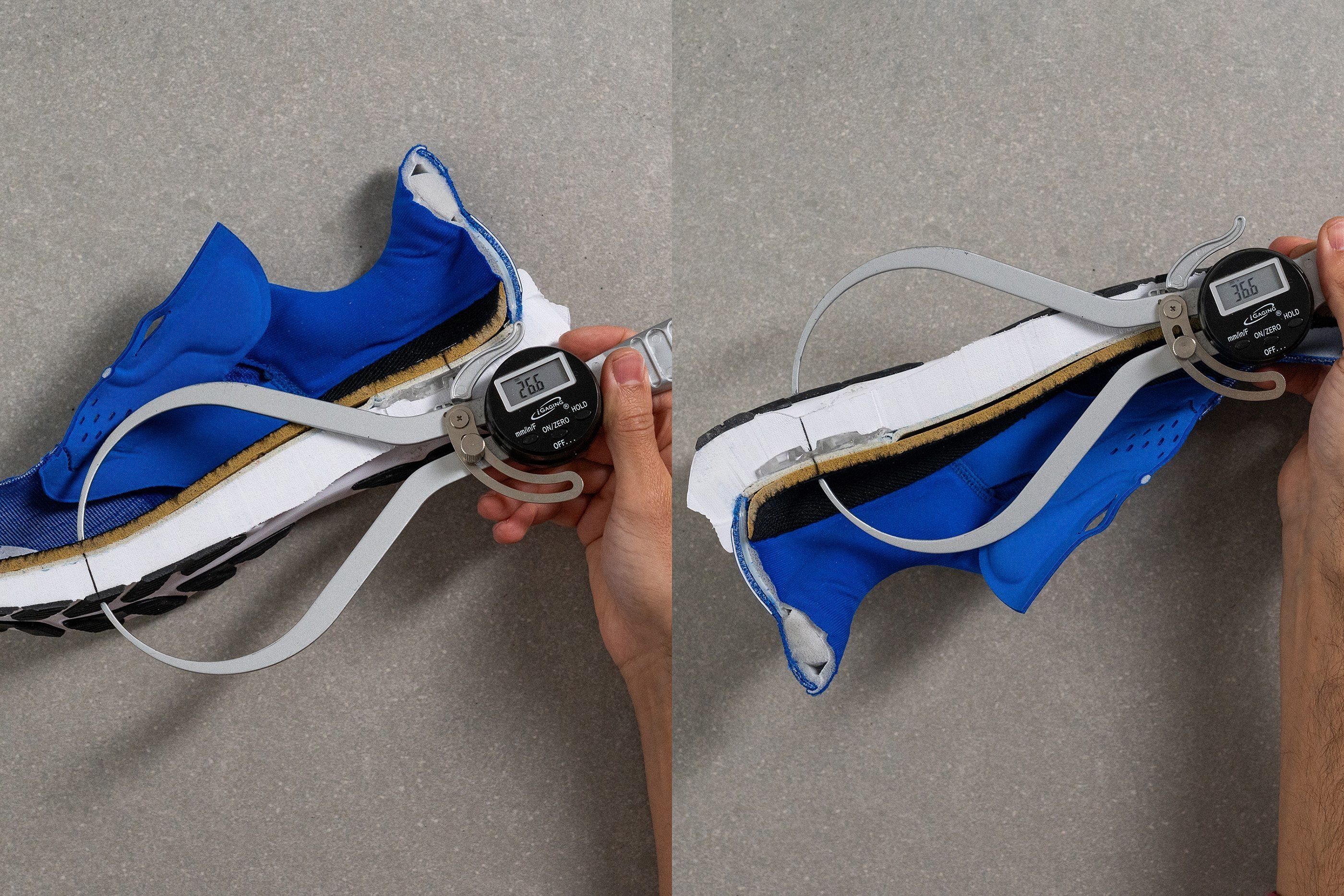
To achieve this, the running shoe must be cut in half. We, of course, do that as well. We then calculate the drop (heel stack minus forefoot stack).
Here are some of the biggest discrepancies in heel drop:
|
Shoe |
Brand (mm) |
RunRepeat (mm) |
Difference |
|
6 |
16.1 |
+168% |
|
|
5 |
11.1 |
+122% |
|
|
4 |
8 |
+100% |
|
|
5 |
2.7 |
-46% |
|
|
5 |
2.5 |
-50% |
|
|
8 |
3.3 |
-59% |
We have covered this topic in great detail in our guide How brands' heel-to-toe drop measurements differ from reality in running shoes.
When it comes to zero-drop shoes, we sometimes get a negative measurement or a drop that is different than a zero, but we think that is ok as long as the difference is not big. In the example of Altra Lone Peak 8, we measured the drop to be 1.4 mm, while the brand claims it to be 0 mm.
Fortunately, in all our reviews you can find the exact drop measurement and rely on those numbers.
Ground feel in zero-drop running shoes
As mentioned above, when getting zero drop shoes, you can opt for:
- Not cushioned running shoes or barefoot running shoes. The midsole is very thin, you are very low to the ground, which means you can feel almost every little pebble, bump, or crack on the road/trail. This means that the ground feel is 10/10.
- Cushioned running shoes. Less ground feel and you get to enjoy a cushioned ride.
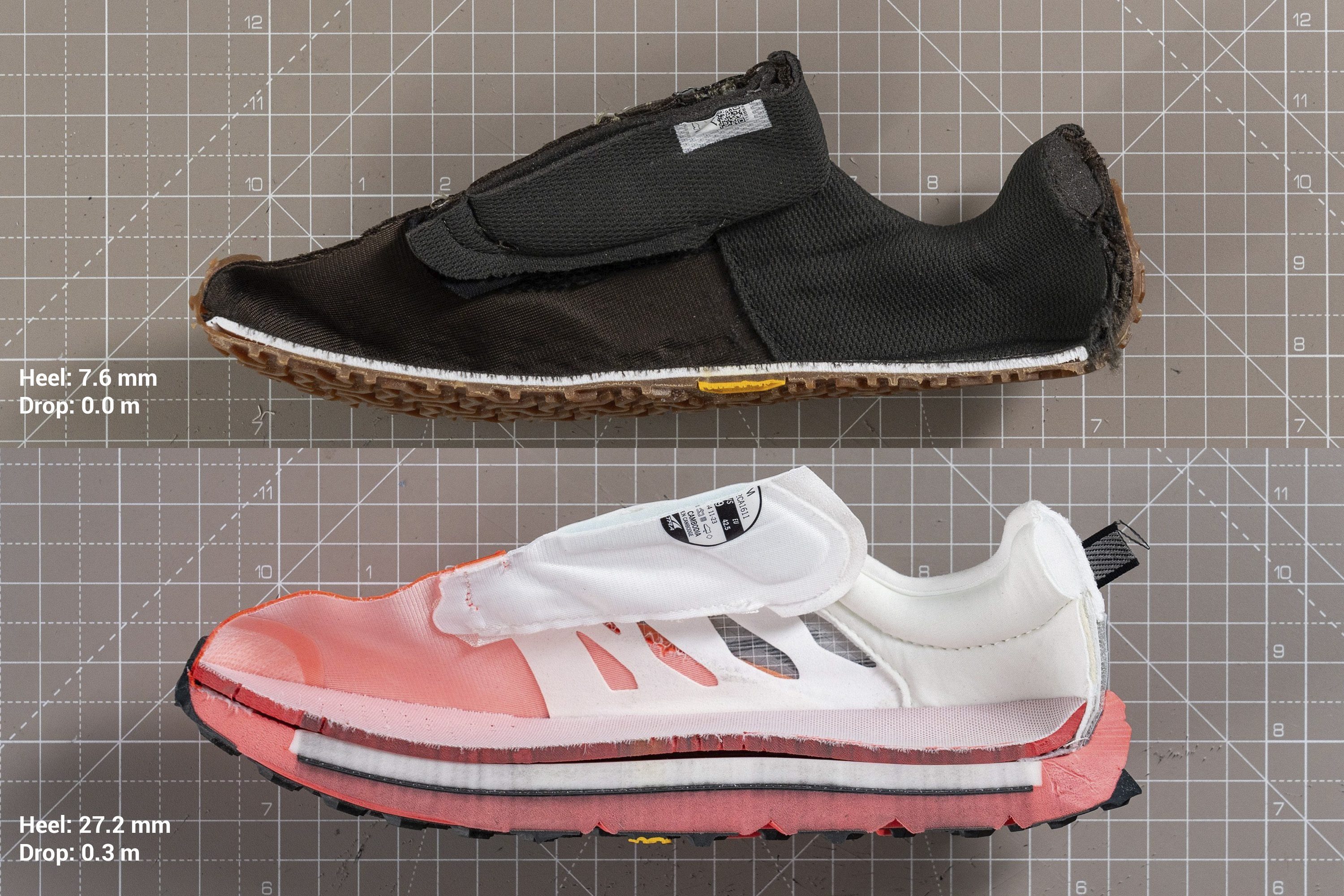
As shown above, we measure the stack height in the lab, which is why it’s easy to choose from more or less cushioned zero-drop running shoes.
Shock absorption and energy return of zero-drop running shoes
Shock absorption is all about protectiveness; it's the midsole's capability to dampen the impact by absorbing the forces at every landing so that less stress is sent to our legs. But, as you may have guessed, we should not expect much in this area from zero-drop running shoes, mainly because many of them are on the lower side (closer to the ground).
Energy return, on the other hand, tells us how good the midsole is at bouncing back after it was compressed. In other words, how much of the energy is returned, given that a part of it is transformed into heat and deformation. When running shoes score higher on this test, their ride feels springy, responsive. When they score low, such a ride is called dull and it makes the legs work more which may end up with premature foot fatigue.
Fortunately, given that we have a standardised lab test for shock absorption and energy return, we can actually look at the numbers.
| Zero-drop running shoes | Shoes with a drop higher than 1mm | |
| Avg. shock absorption [SA] at the heel | 91.7 | 127.2 |
| Avg. shock absorption [SA] at the forefoot | 91.3 | 103.4 |
| Avg. energy return [%] at the forefoot | 55.7 | 60.2 |
When it comes to shock absorption, we consider it moderate when it's higher than 110 SA and high when it's above 130 SA. Looking at the numbers for zero-drop shoes, it is clear that one should not expect the best shock absorption from zero-drop running shoes.
Foot-shaped zero drop running shoes
When diving into the zero-drop waters, it’s difficult not to mention the minimalist aspect, the barefoot aspect, and the foot-shaped toeboxes.
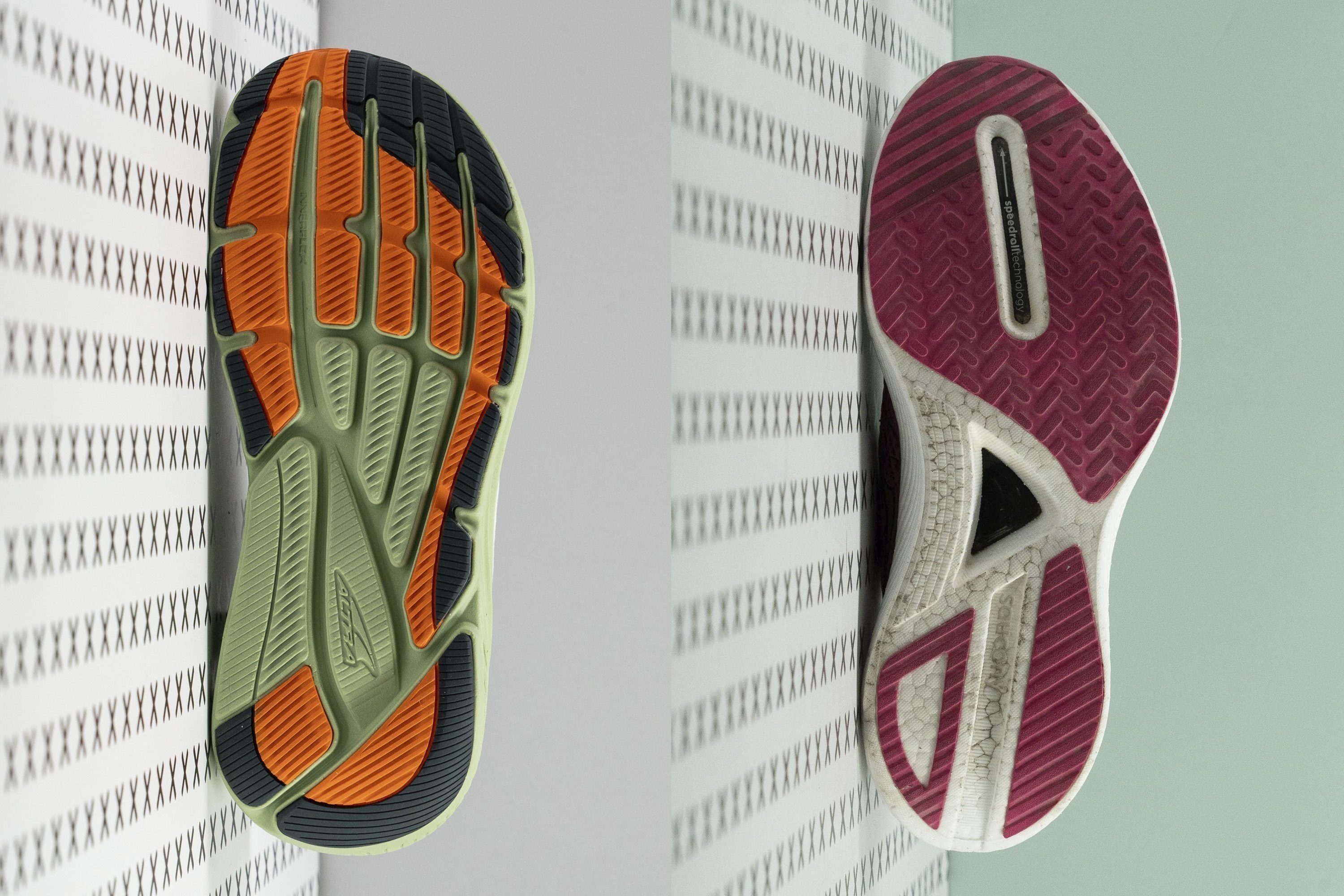
Altra is known for zero-drop running shoes and for foot-shaped running shoes. Their toeboxes are wider than the average, with some being significantly wider than the average. It depends on the fit (they offer 3: Original, which is the widest; Standard, which is medium; and Slim, which is the narrowest). Just keep in mind that Altra’s Standard fit is much wider than the Medium (regular) in other brands.
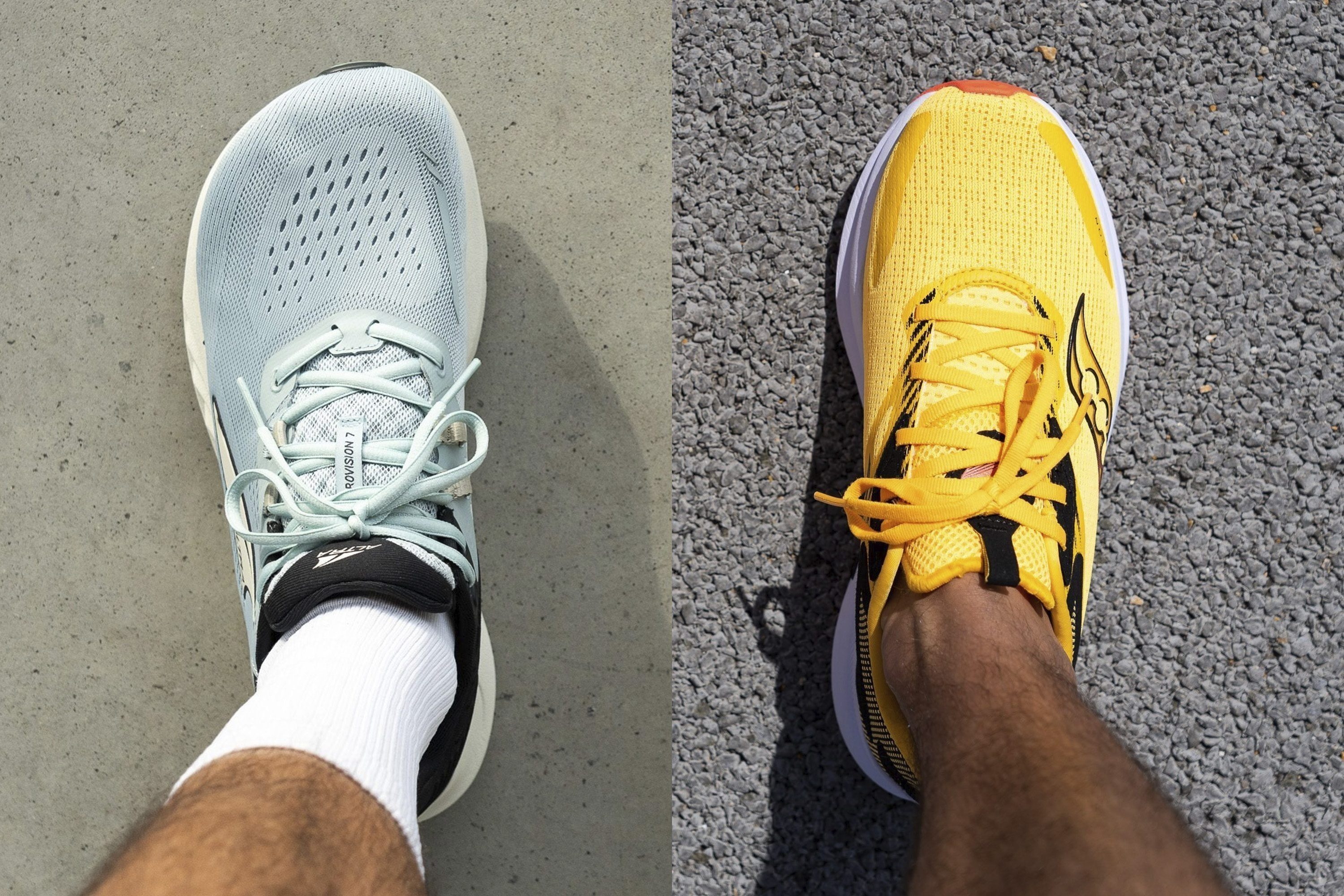
Although Altra trademarked this shape, other minimalist and barefoot (also zero-drop) running shoes with wider toeboxes are available. This is because, as a part of the whole natural-running movement, toes are supposed to splay and not be cramped in the toeboxes.
| We covered the width of Altra running shoes in great detail in our guide on Best Altra trail running shoes. |
Finding a wide and tall toebox in zero running shoes
There's no way to measure the width of the toebox on the inside without somehow destroying its form or shape. The callipers can't fit inside, and we can't get a proper reading. Because of this, we make a gel mould of each shoe's interior that enters our lab.
If you have such needs, do not worry, as we measure the width of the shoe in 2 places and have the lab data at your disposal.
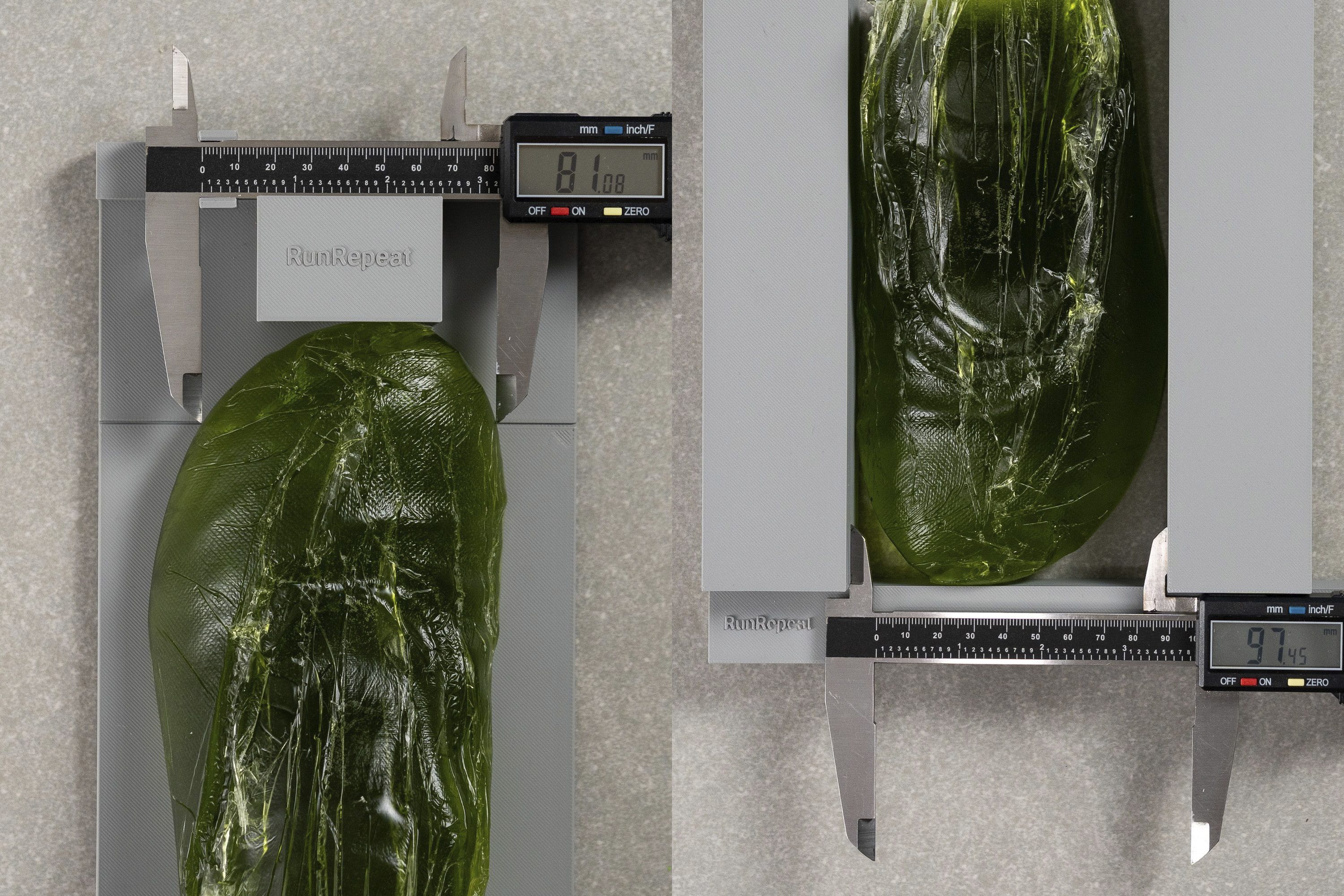
Depending on where your toes need more room, you can look for toeboxes that offer that extra space.

If this is where you need extra room, we recommend looking at the zero-drop running shoes listed below. We update these lists automatically, with every zero-drop running shoe that we test!
How soft are zero drop running shoes?
The softness of the midsole plays a huge role in the overall comfort and performance. If you’re curious about different foams used in running shoes and their properties, we wholeheartedly recommend reading our ultimate guide on foams.
Showcasing the cushioning in a zero-drop Altra Paradigm 7
We measure the softness of the midsole with a shore A durometer.
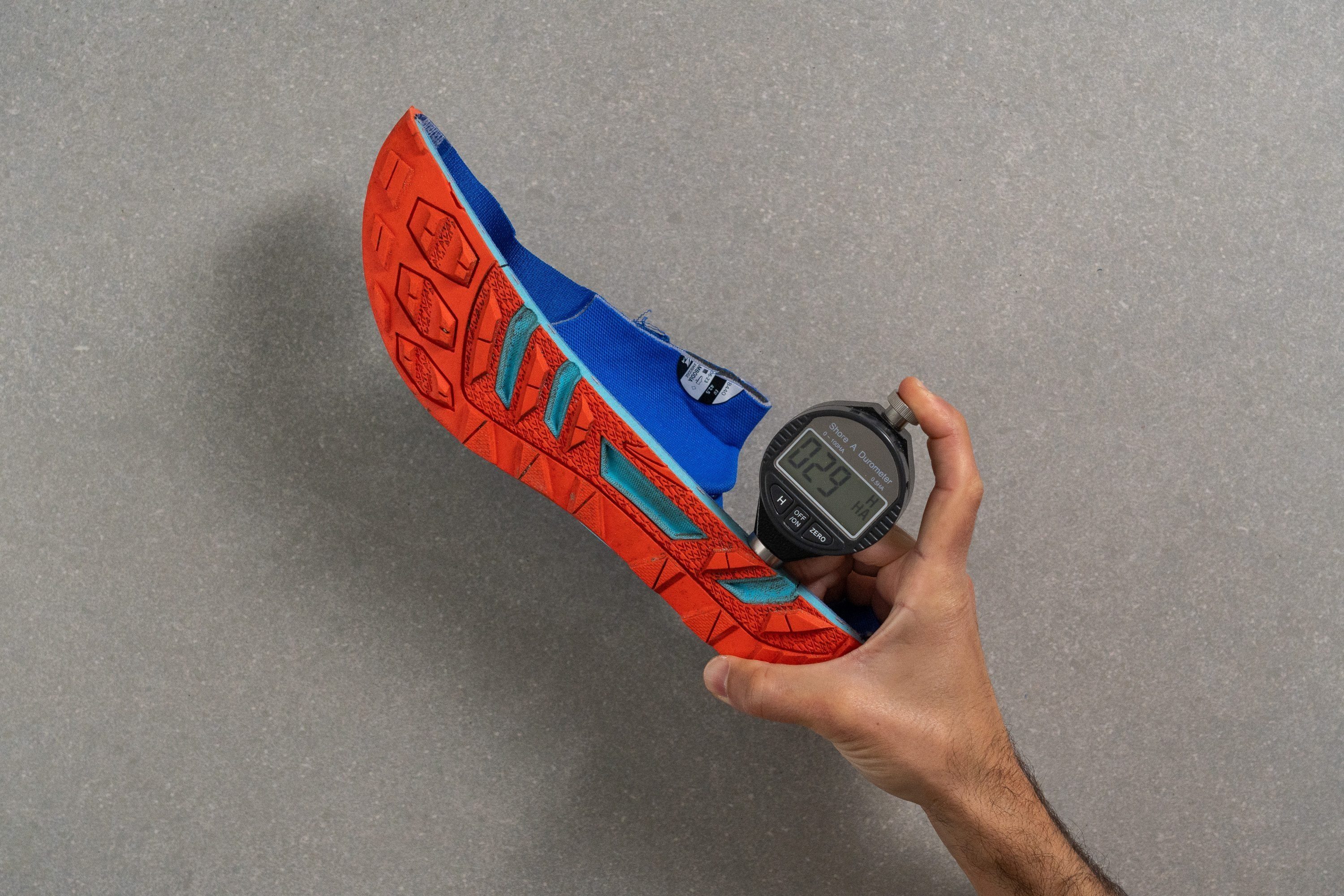
The lower the number on the durometer, the softer the midsole. In case you're very specific about this, we list both the firmest and the softest zero-drop shoes below (these lists are automatically updated as we publish new shoe reviews).
Flexibility of zero drop running shoes
When it comes to the flexibility of running shoes, we do the longitudinal and torsional tests. For longitudinal flexibility, we lock the forefoot in place and bend the heel 30 degrees after adjusting for the forefoot rocker. The bigger the number on the display, the more force we used, which means the stiffer the shoe.
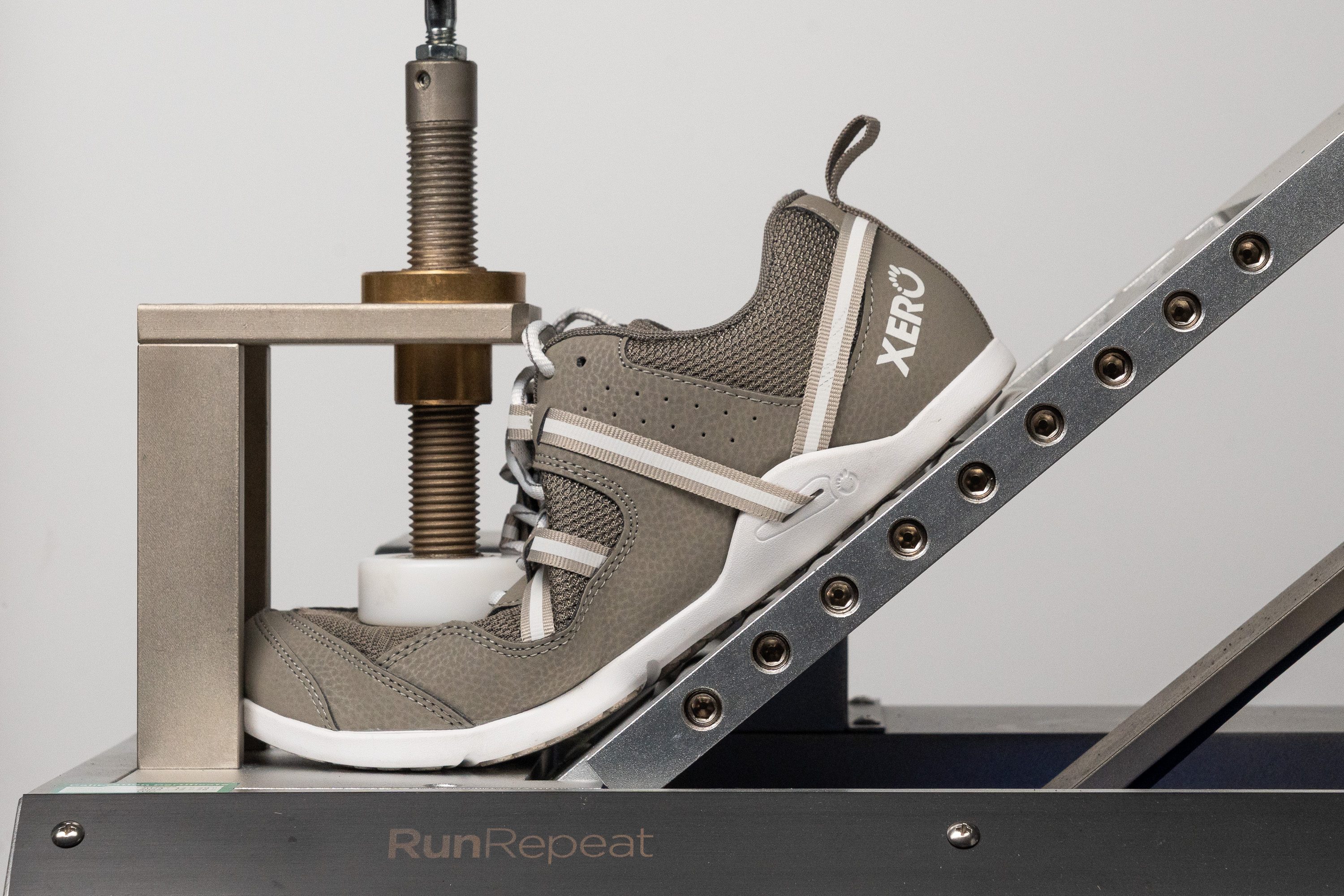
More flexible running shoes allow for a more natural movement. Stiffer shoes, on the other hand, offer more stability and can be snappier (especially when equipped with a carbon-fibre plate).
When it comes to the torsional rigidity, we twist the shoe and assign it a 1-5 rating, where 5 is the most rigid. Rigid running shoes are great for trail runs, especially the ones on technical terrain or sections with large sharp rocks, where every bit of stability and protection matters.
When it comes to running shoes with a 0 mm drop, runners most often look for flexible shoes because zero drop is often related to more natural running and feeling the ground, and high levels of flexibility go hand in hand with that.
How durable are zero-drop running shoes?
Depends on whether they are made for road, trail, or both. And it depends on their design: cushioned or barefoot? Nevertheless, we test them all and log our data.
In our shoe lab, we use a Dremel to test the durability of running shoes. We press it against the a) toebox b) heel padding and c) outsole. This allows us to understand how durable the shoes are in those 3 places.
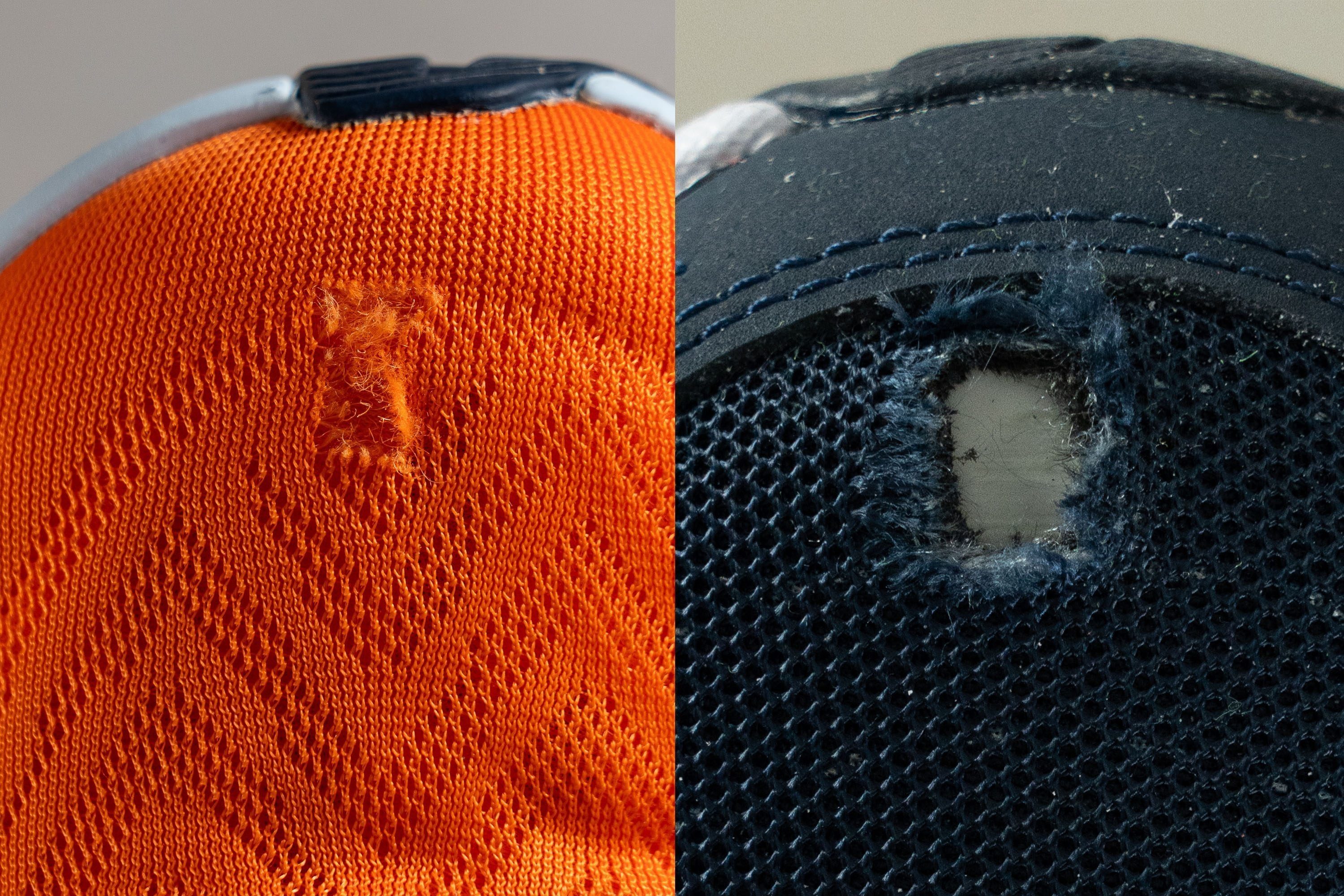
When testing the durability of the toebox and heel padding, we assess the damage on a 1-5 scale, where 5 is the most durable.
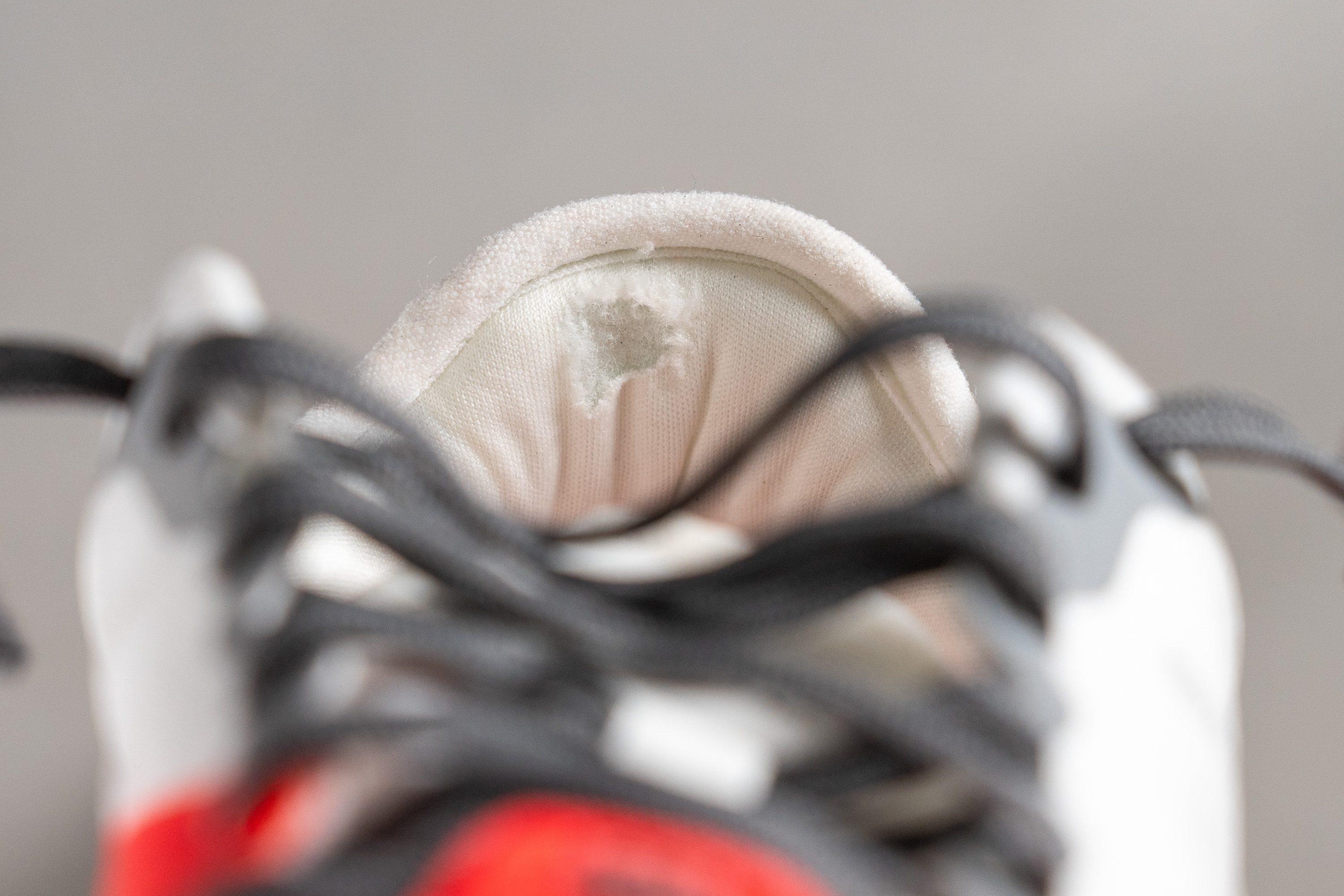
But, when we test the outsole, we use a tyre tread gauge. It allows us to measure the exact depth of the dent our Dremel has made.

The bigger the dent, the less durable the outsole.
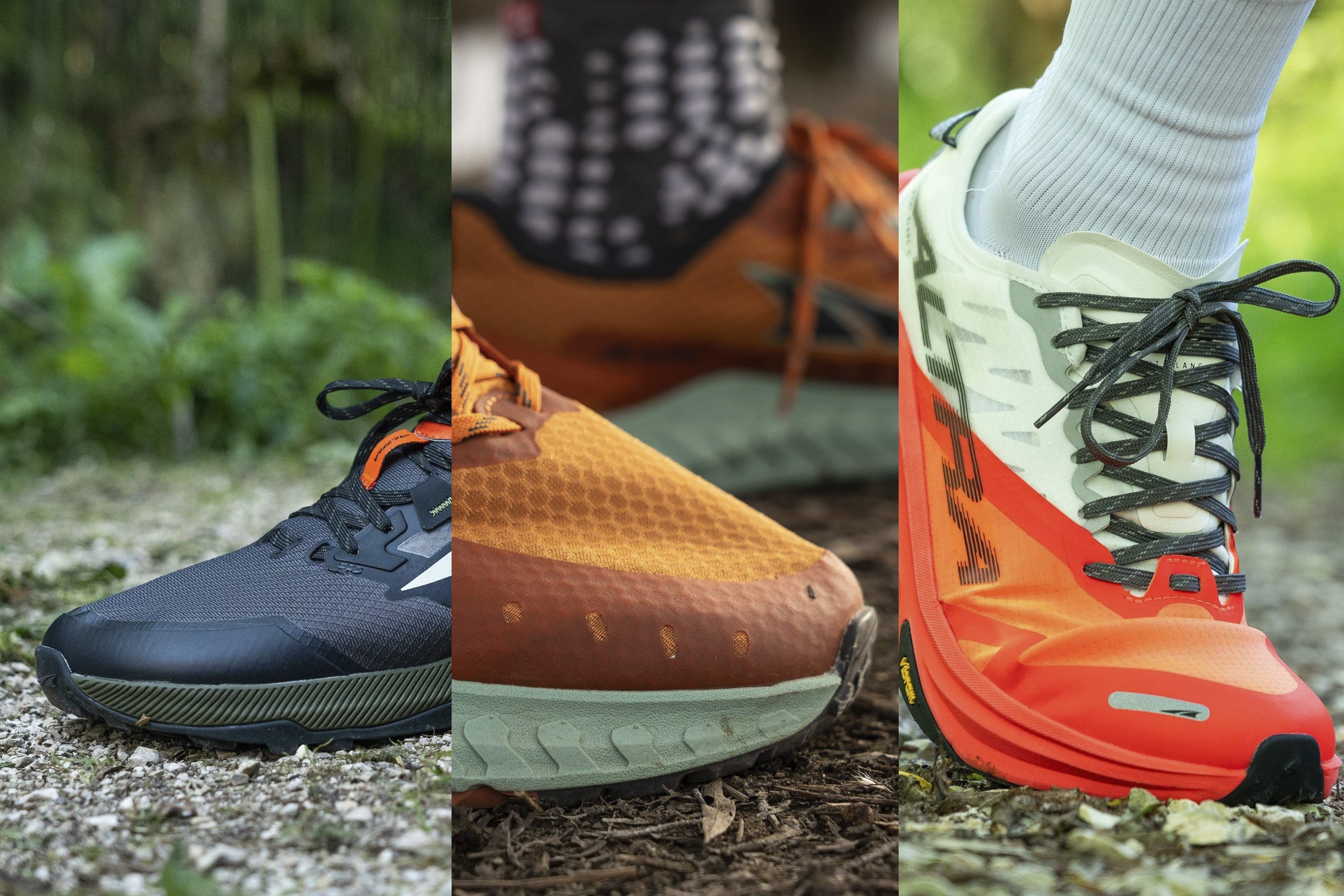
The durability of the toebox is, of course, more important in trail shoes than in road shoes.
How to transition to zero-drop running shoes
There isn’t one simple answer because how much time you’d need to do this depends on:
- Which shoes did you previously run in? How high is their heel drop and were they cushioned? It’s not the same to transition from 4 mm to 0mm or from 12 mm to 0 mm.
- Are you a heel striker? If yes, you might need more time to get used to the zero-drop shoes, especially if they are not cushioned enough at the heel to welcome your heel strike.
- Do you have any (past) injuries, and is there a reason you want to keep the load lower on certain parts of the legs?
- Which zero-drop shoes are you buying now: cushioned or not cushioned?
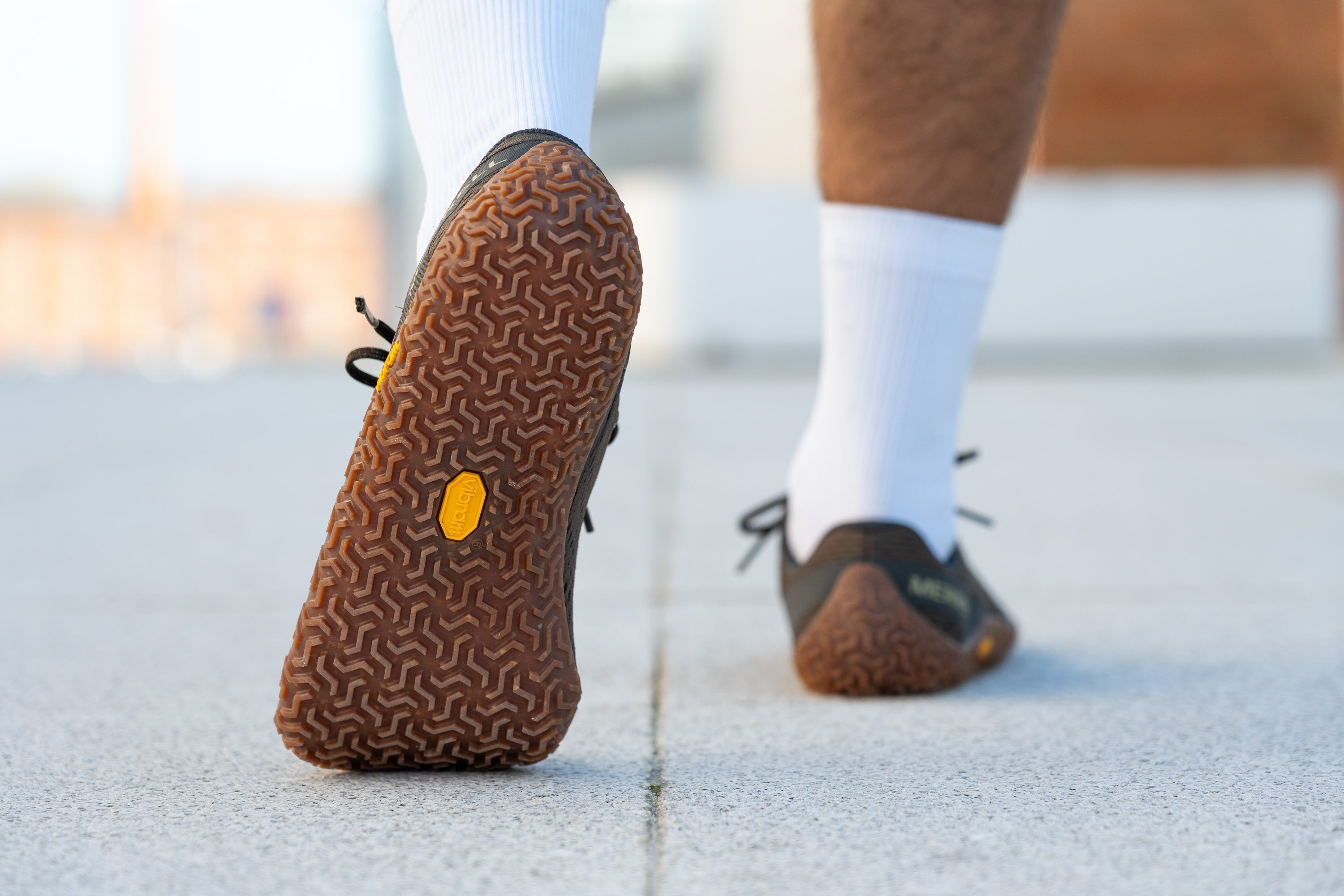
Here are a few tips on how to include the zero-drop running shoes in your rotation:
- Start slowly. The transition must be gradual. You can first use the shoes to just walk/hike in them and not immediately run. Short walks/hikes only.
- When you start running, do short, easy runs only at the beginning. A few miles, tops.
- Don’t run in zero-drop shoes every day. Start with a few times per week.
- If you feel pain, premature fatigue, or any straining, it is best to stop immediately. You might want to carry your ‘regular’ (higher-drop) running shoes in your backpack in case this happens so that you can get back home in shoes your legs are familiar with.
- Keep in mind that it can take up to half a year or a year to completely adjust to zero-drop running shoes (to be able to do a 10-mile run or so, not just the short one).
- If your feet are hurting in zero-drop shoes, consider adding exercises that strengthen your feet and calves to your weekly workouts.
Overall, it’s great to include different drops in your rotation because you get to strengthen different muscles in your legs. Just stay on the safe side and keep the transitions gradual!

